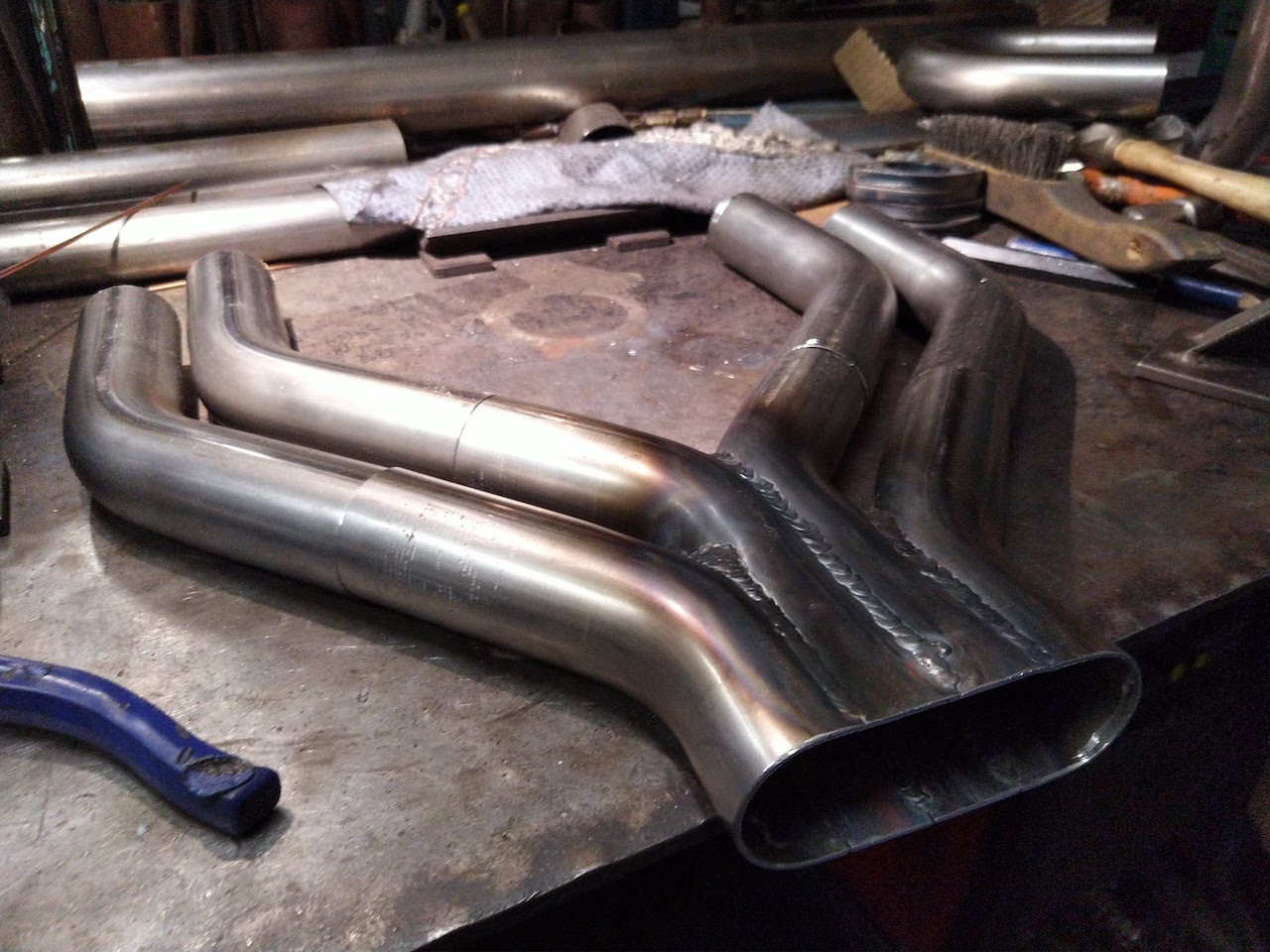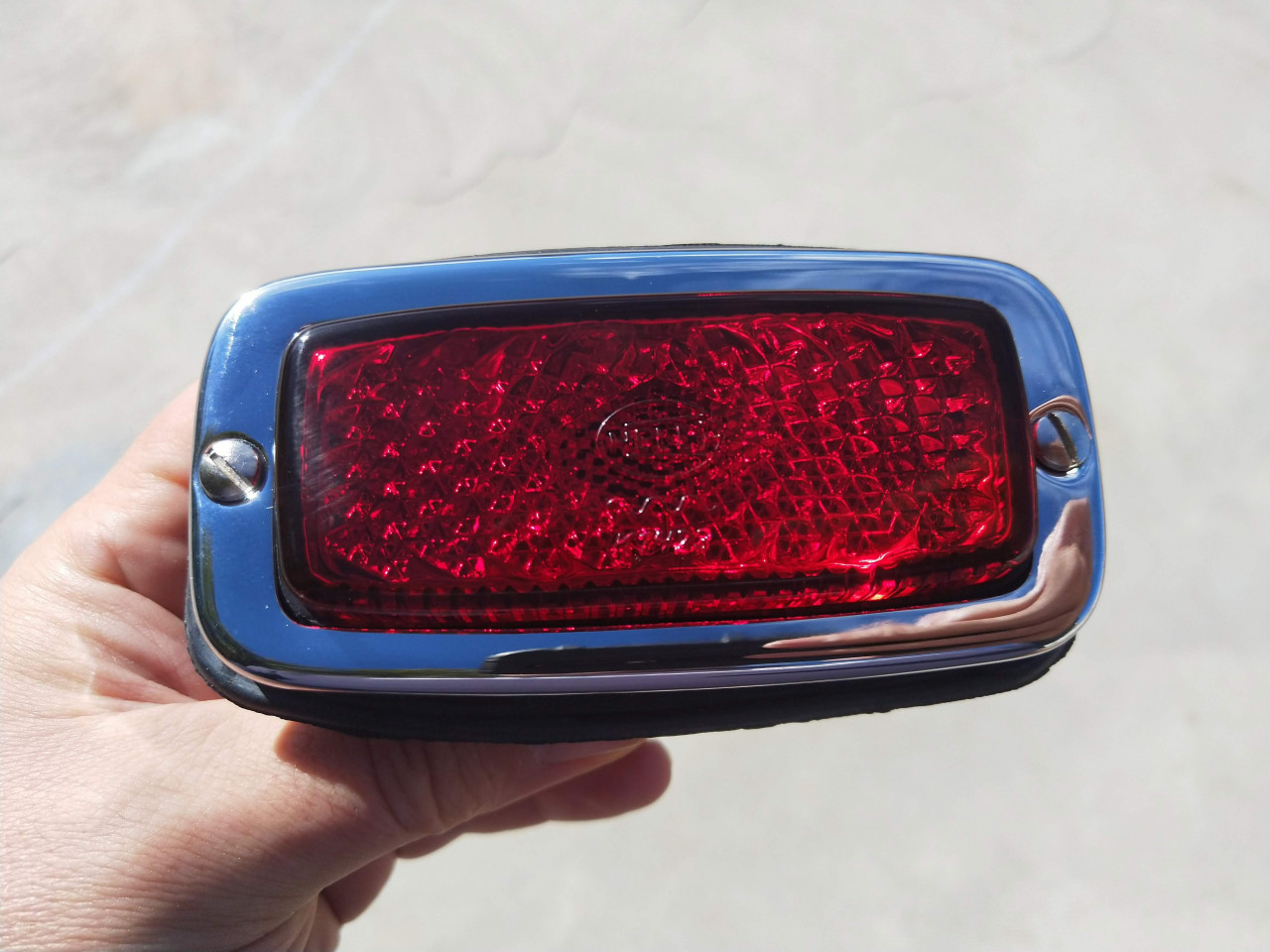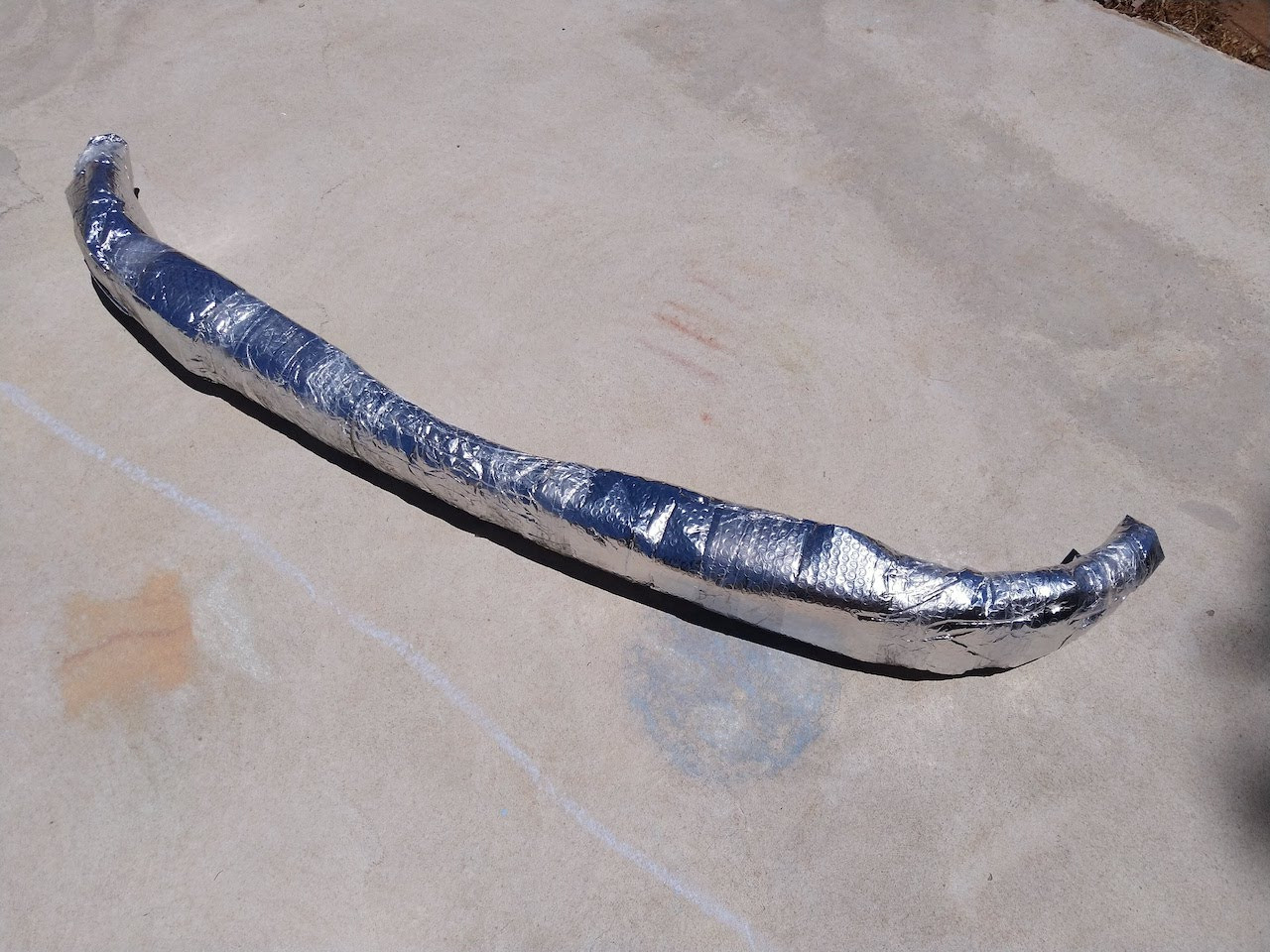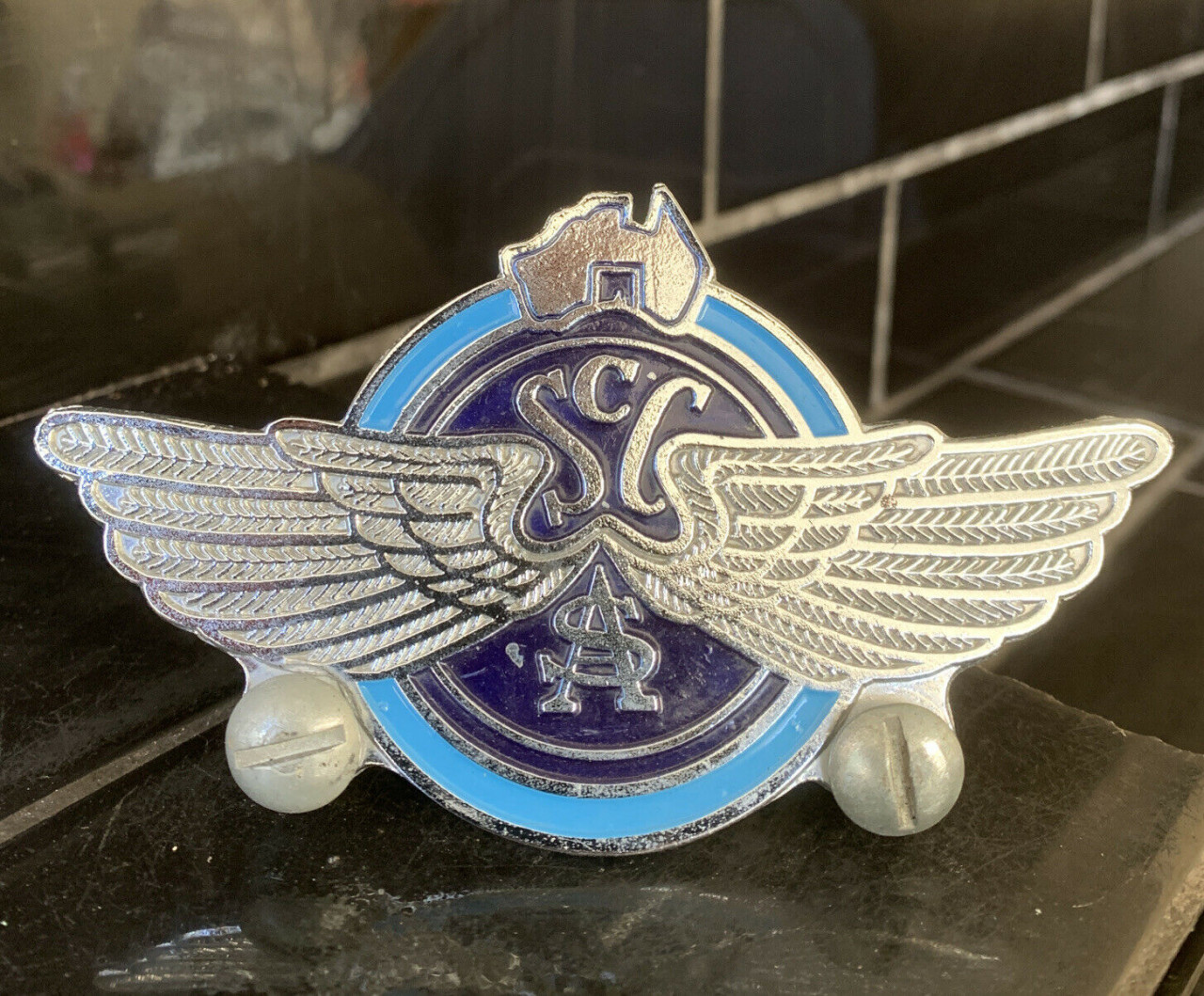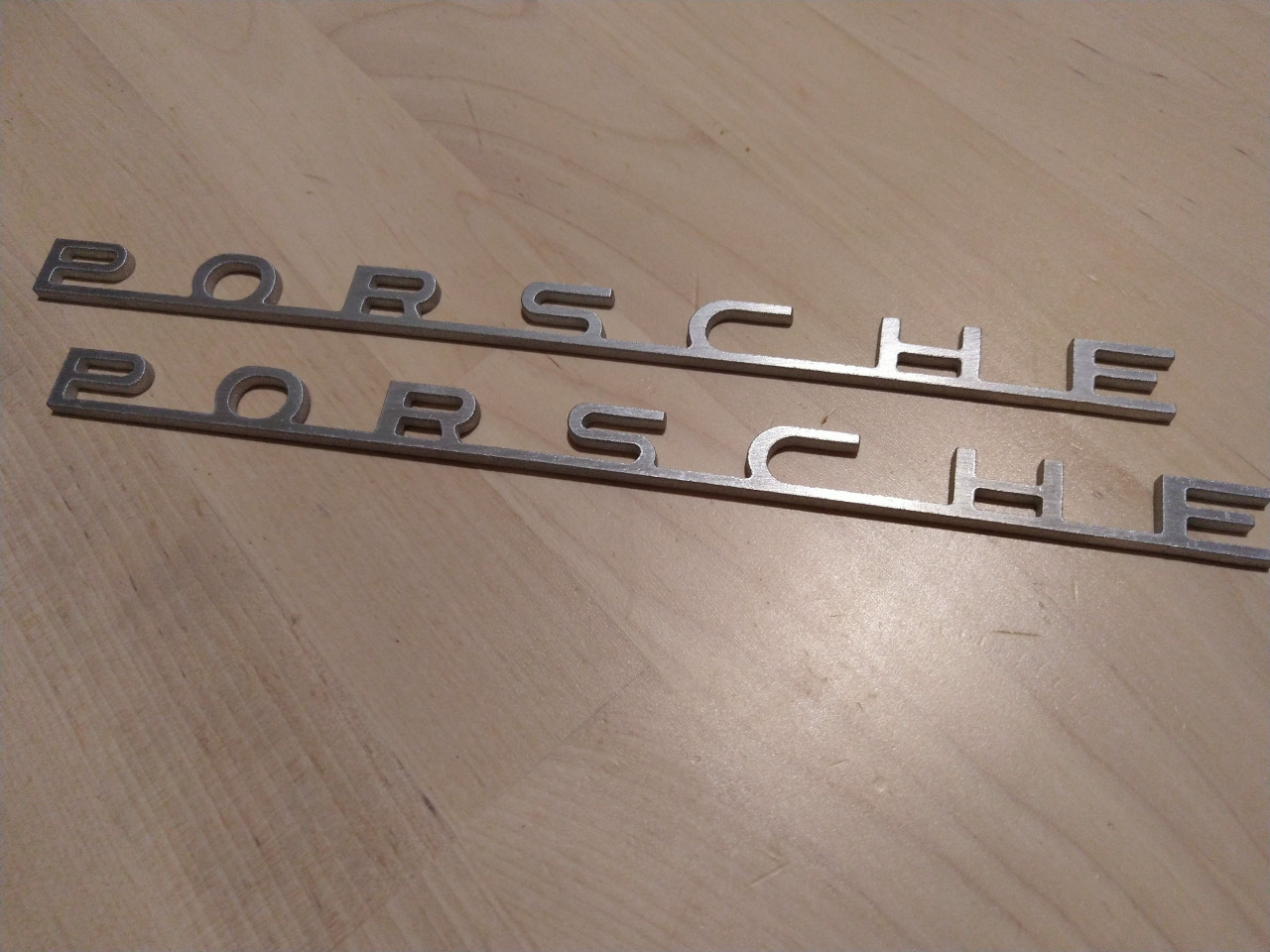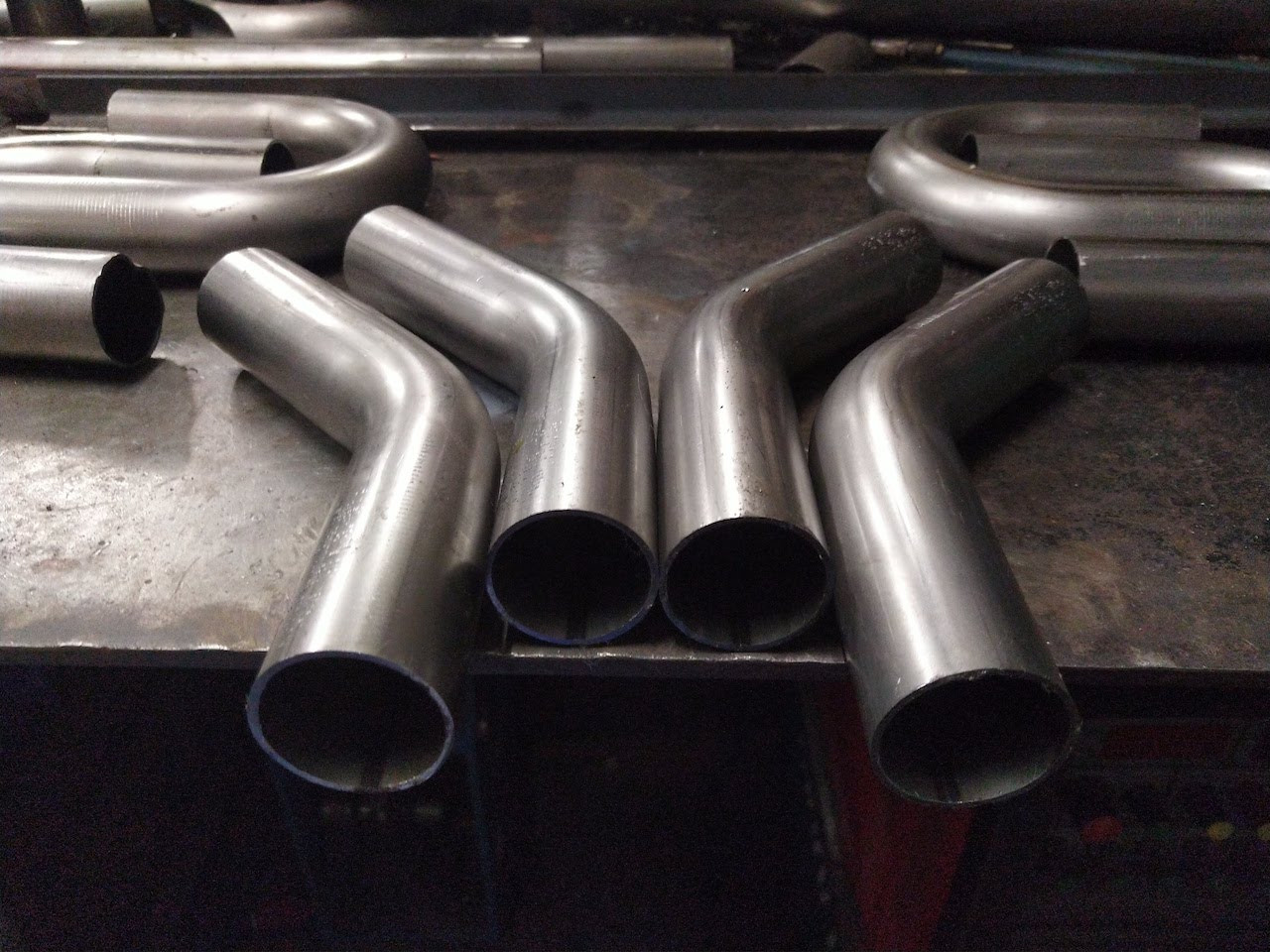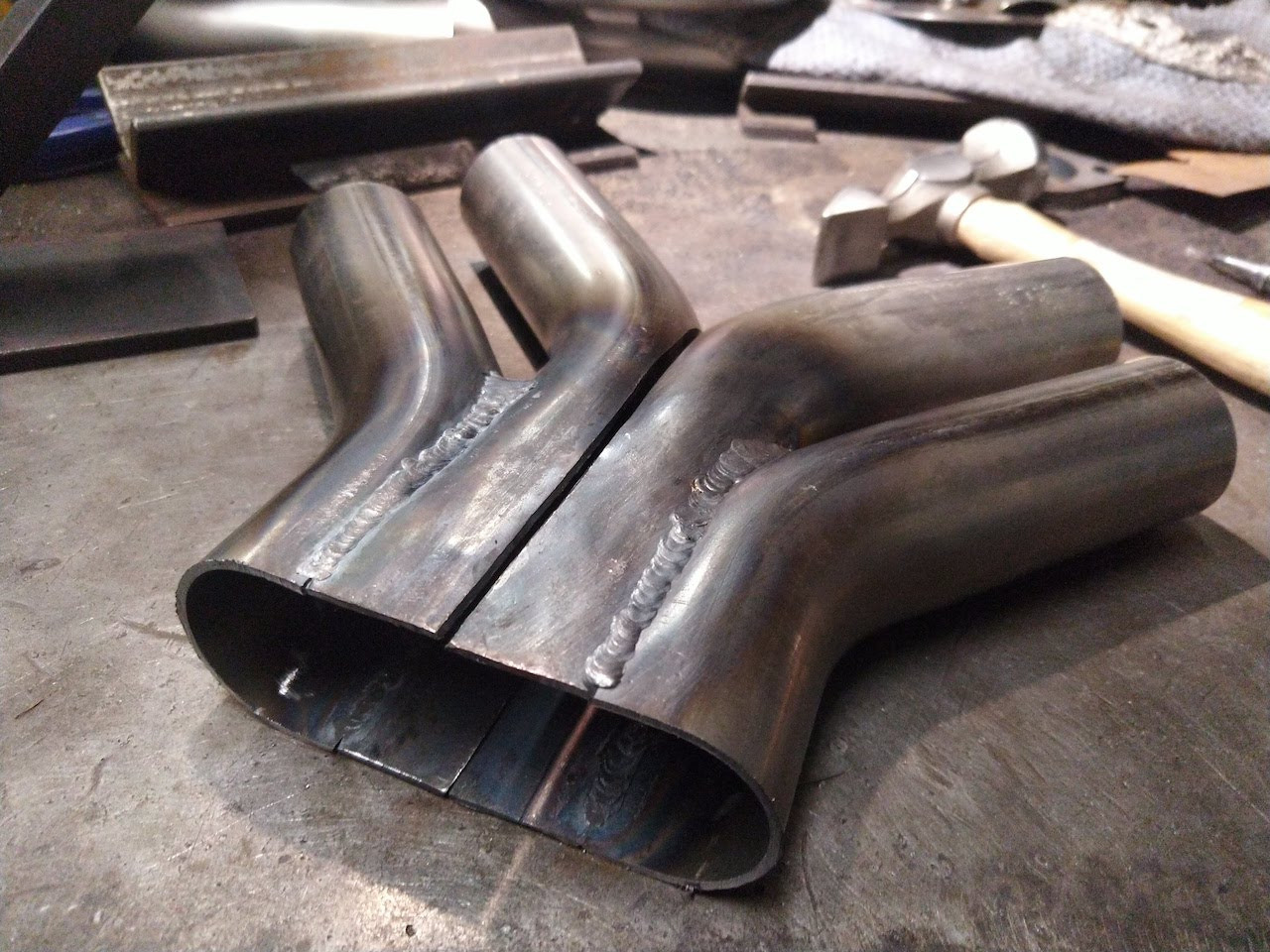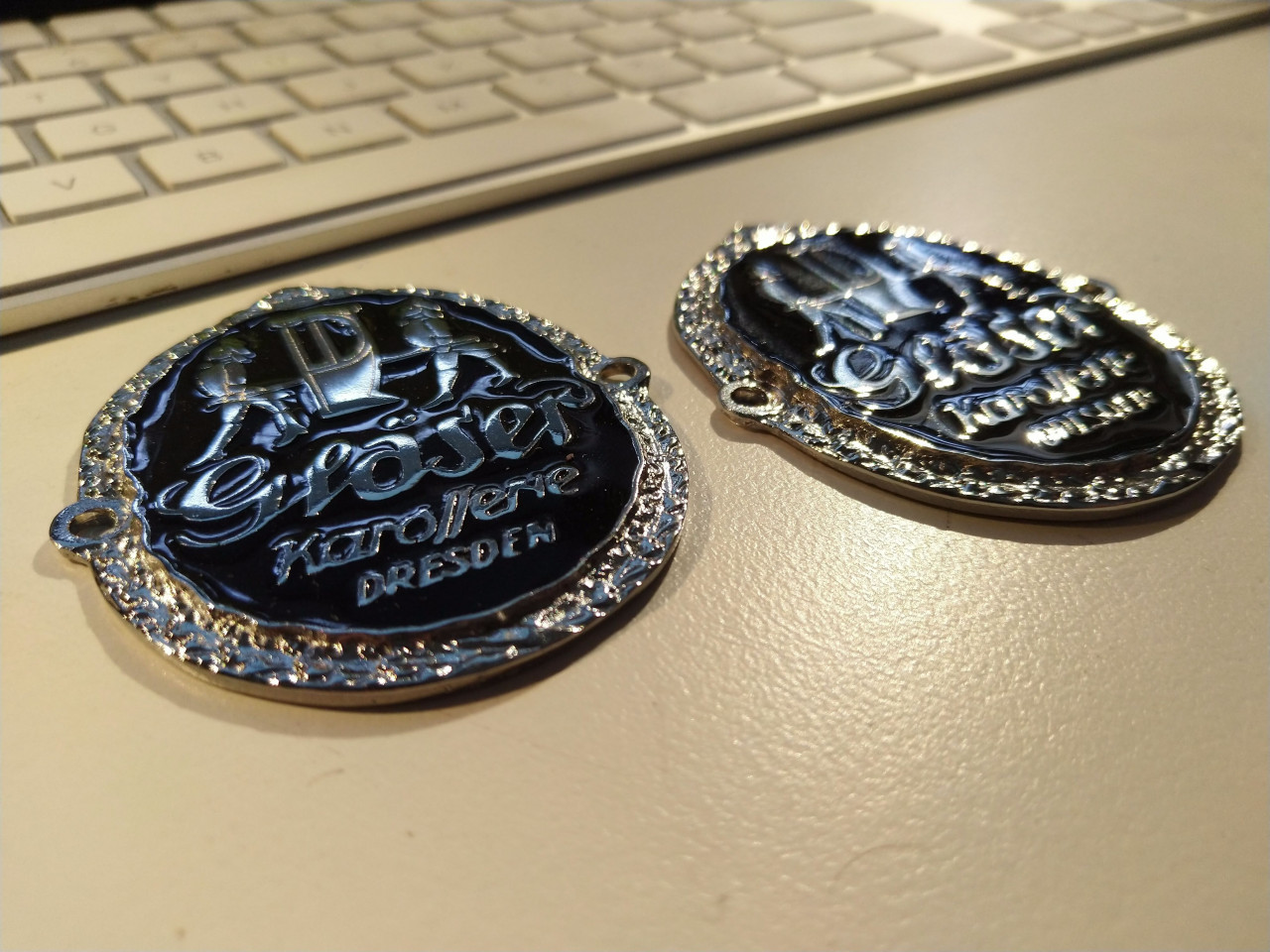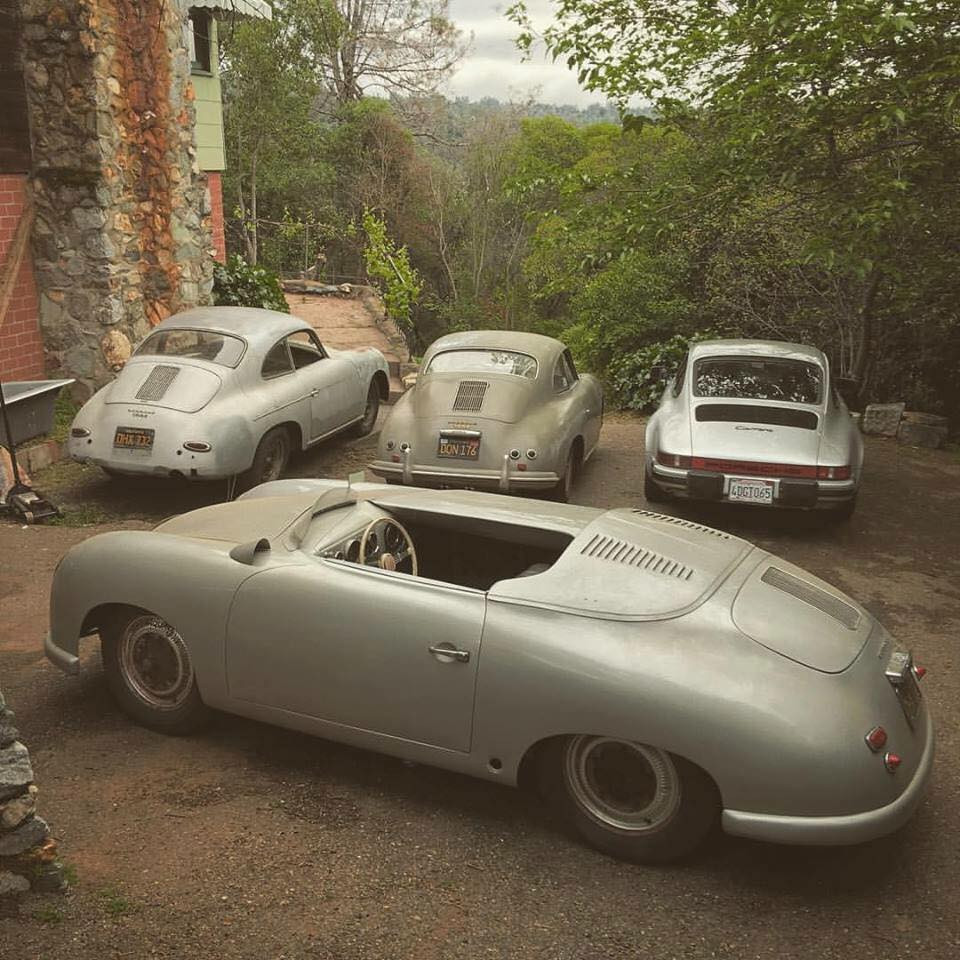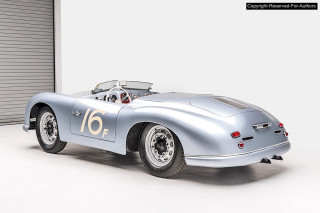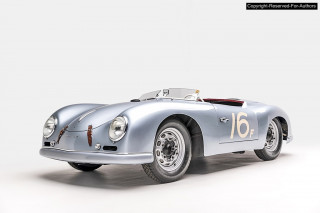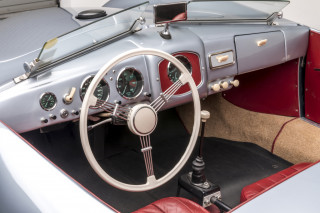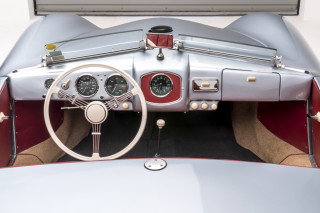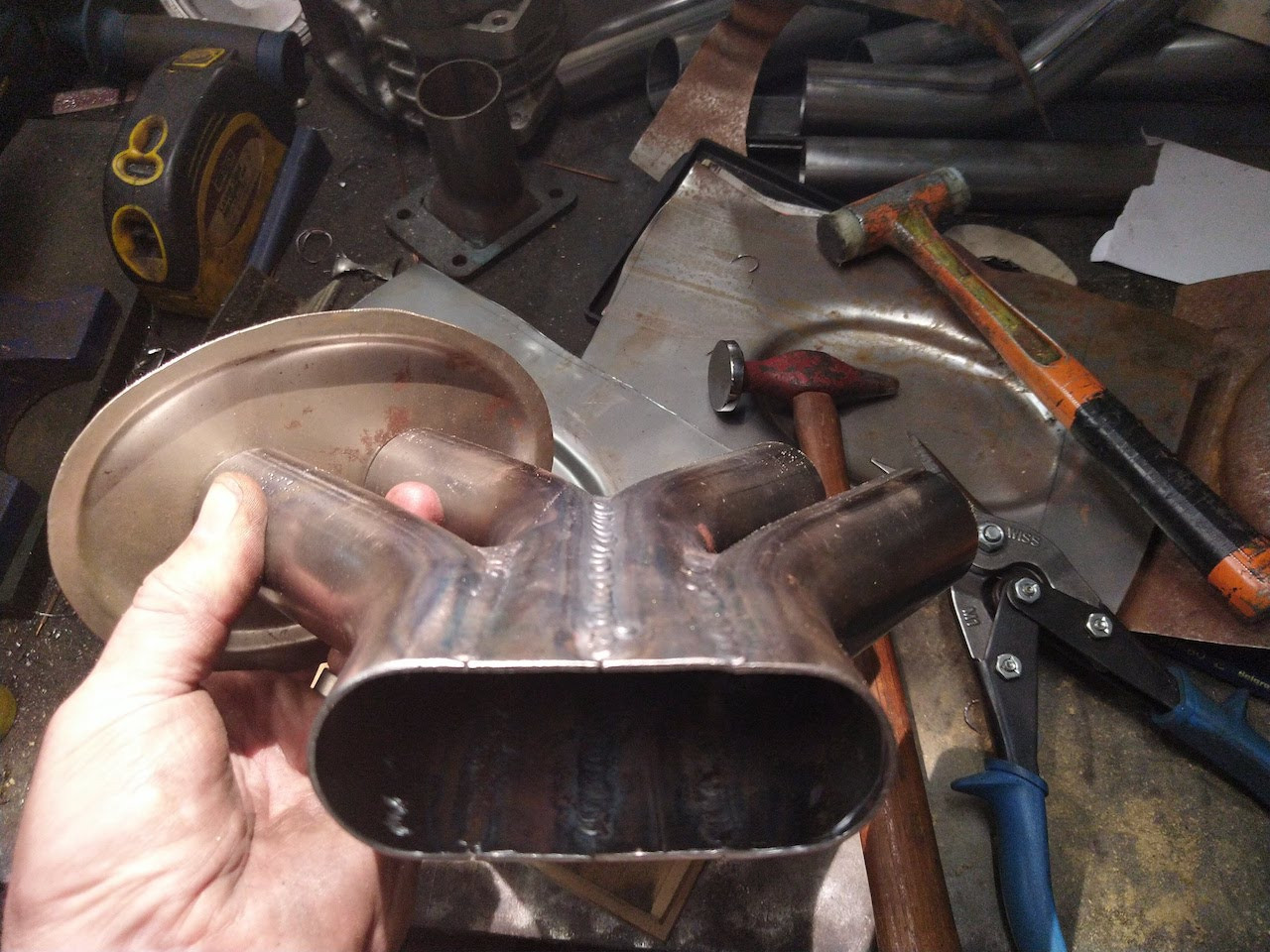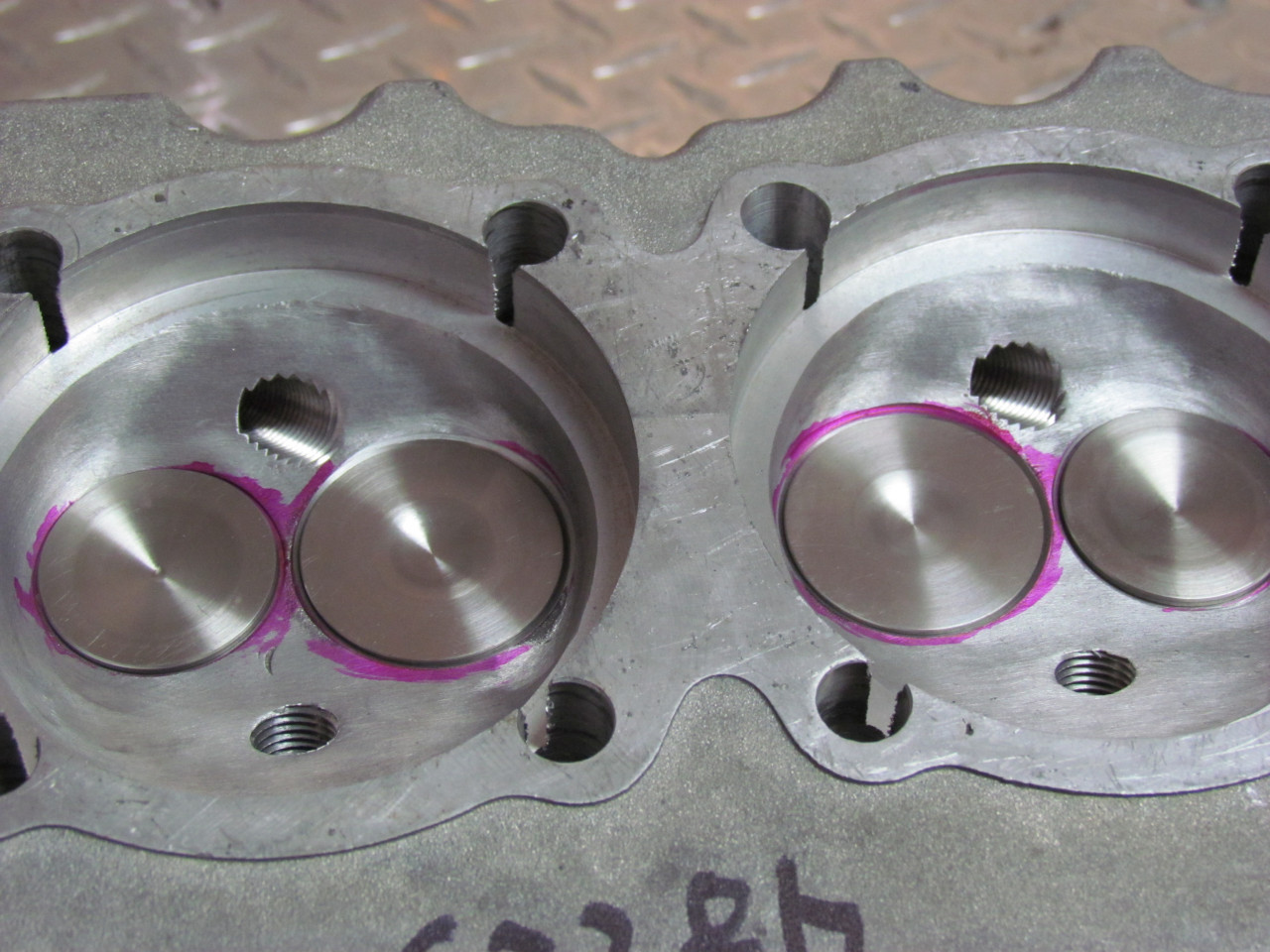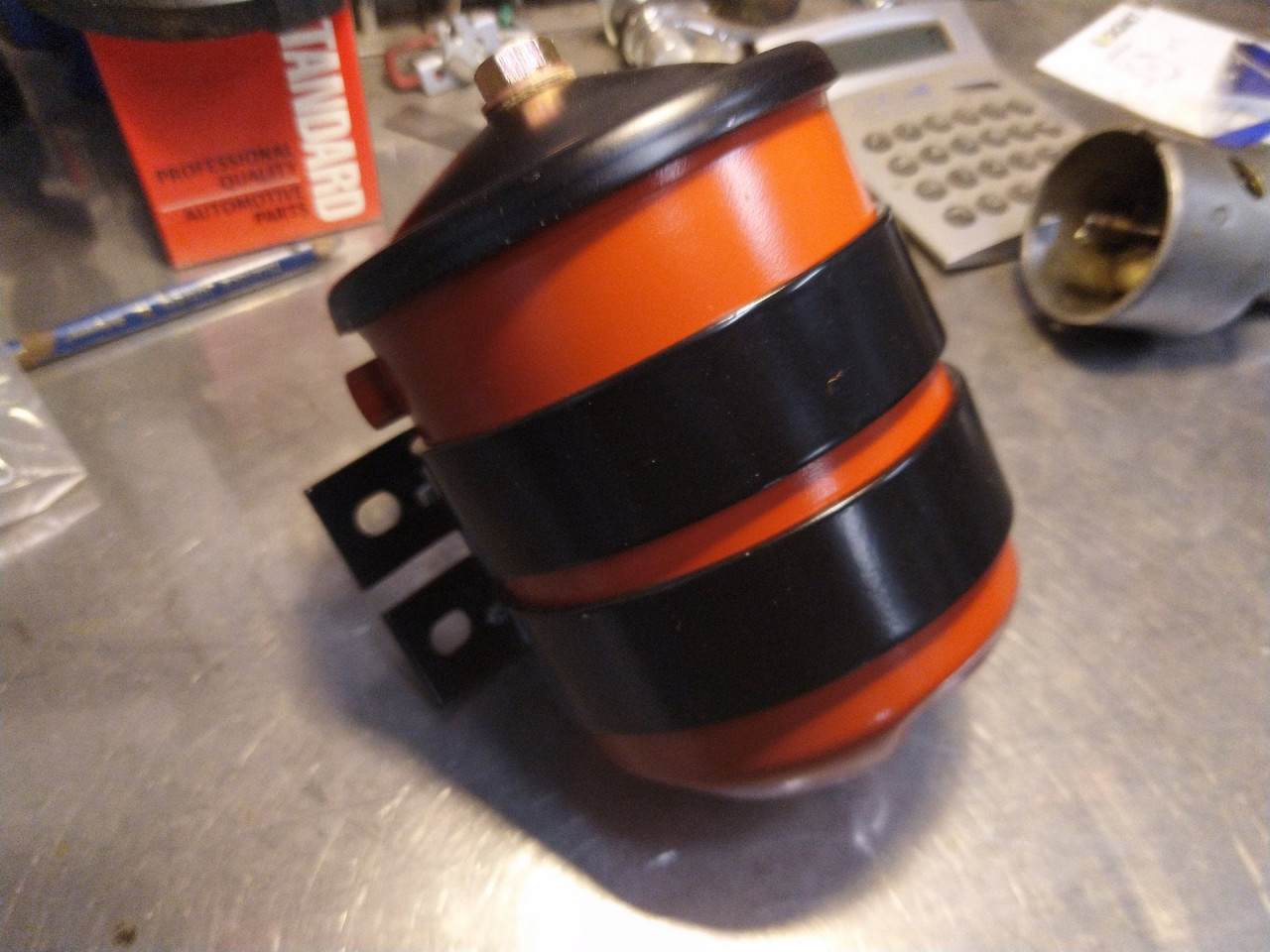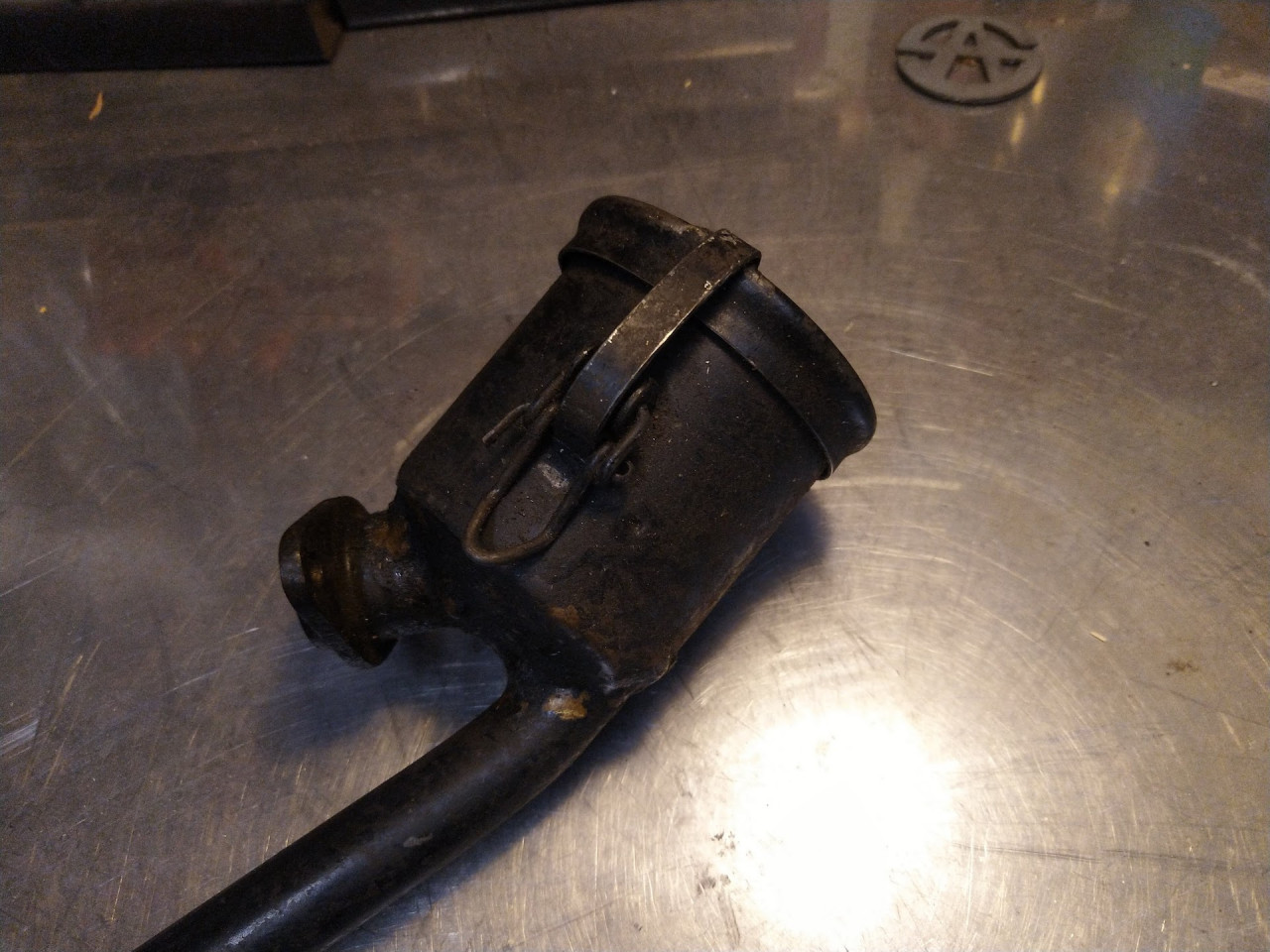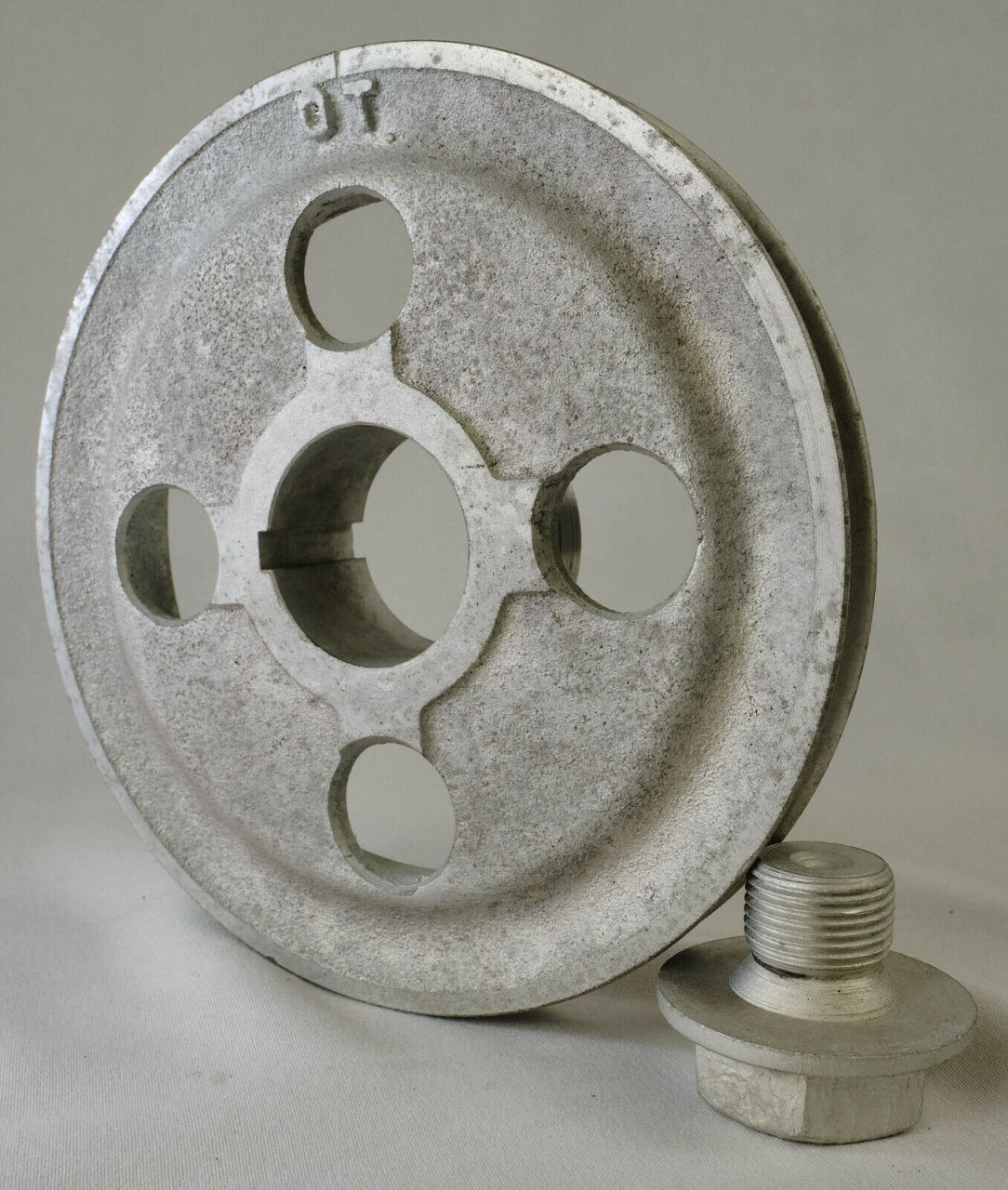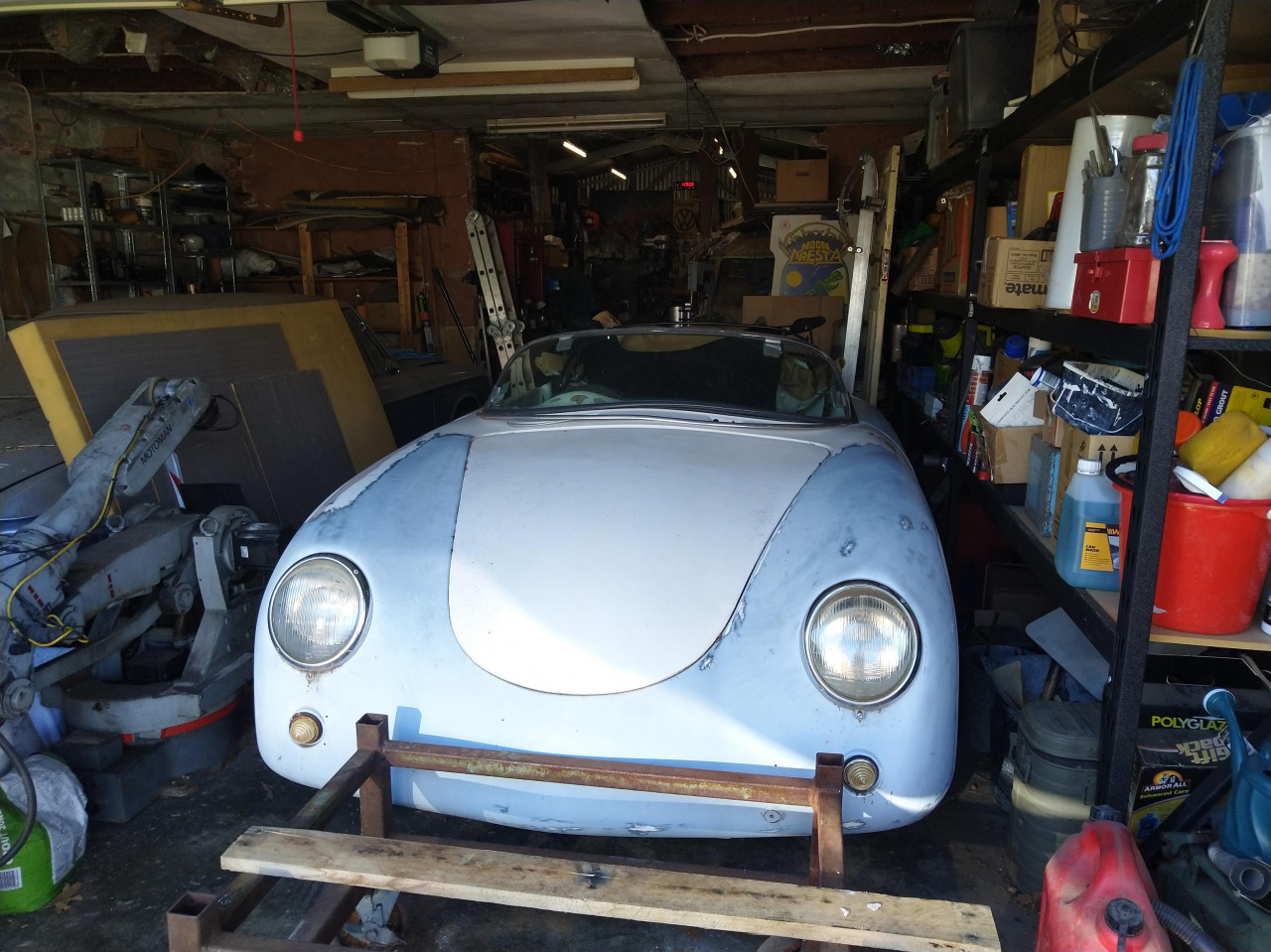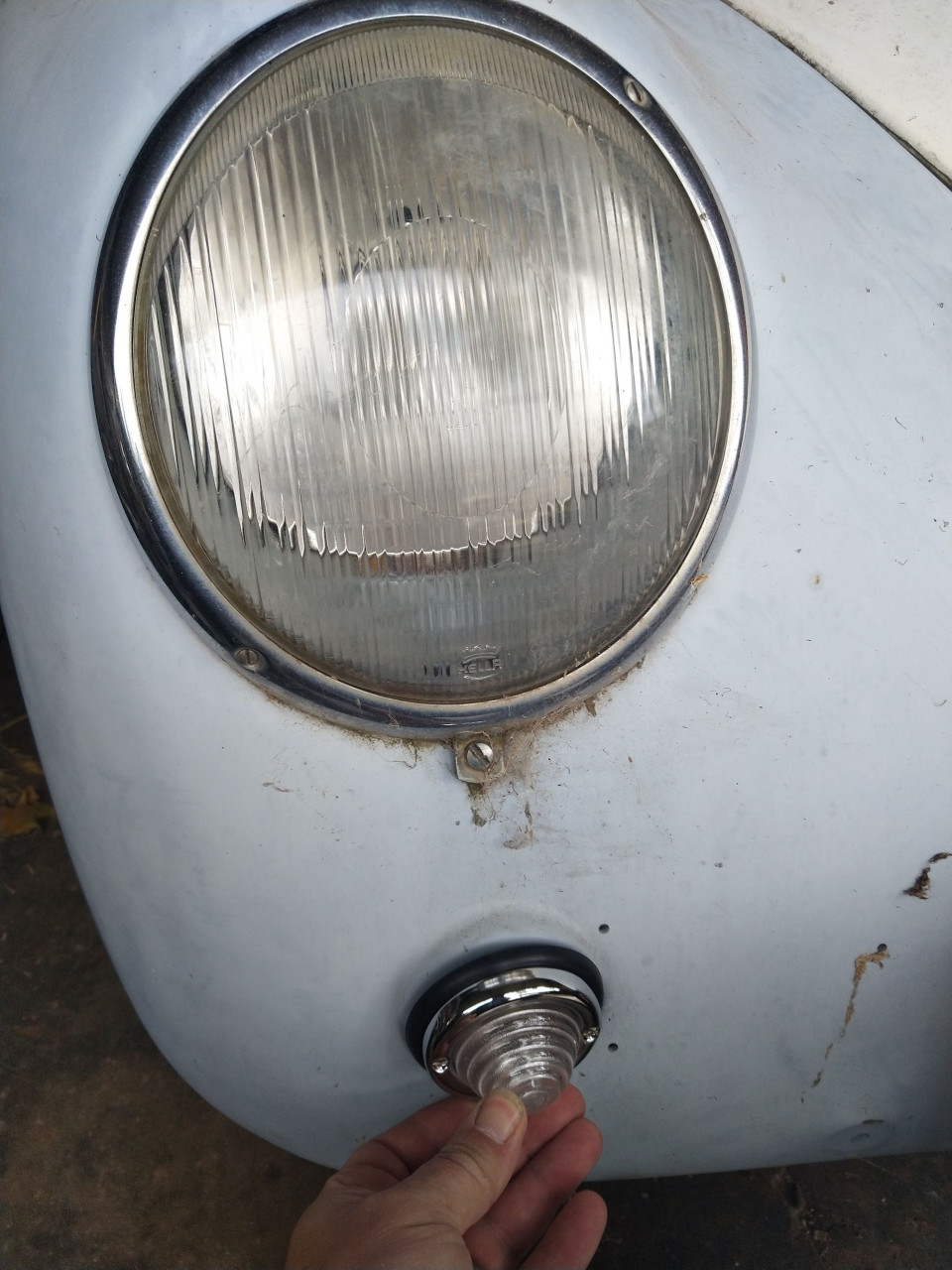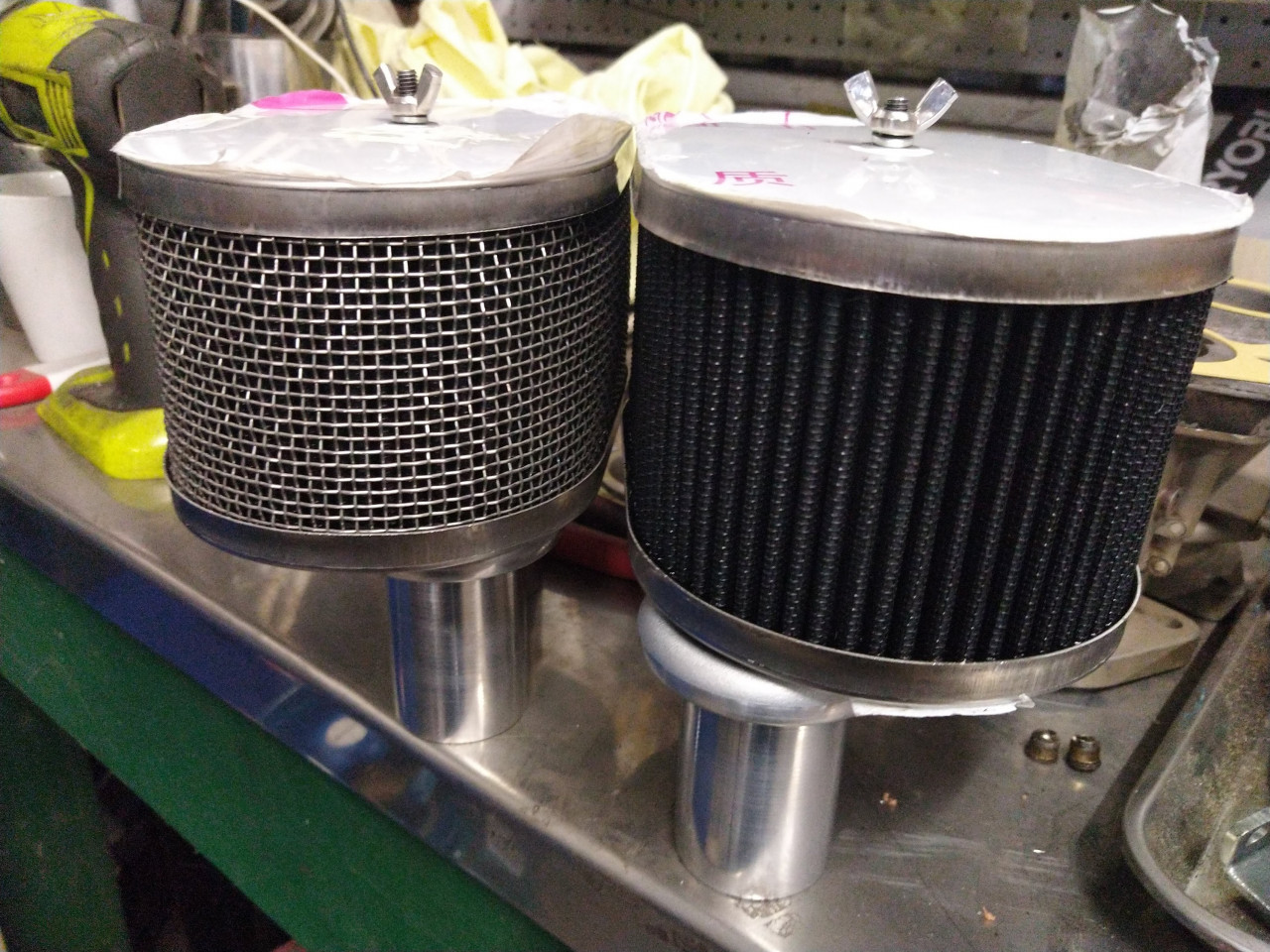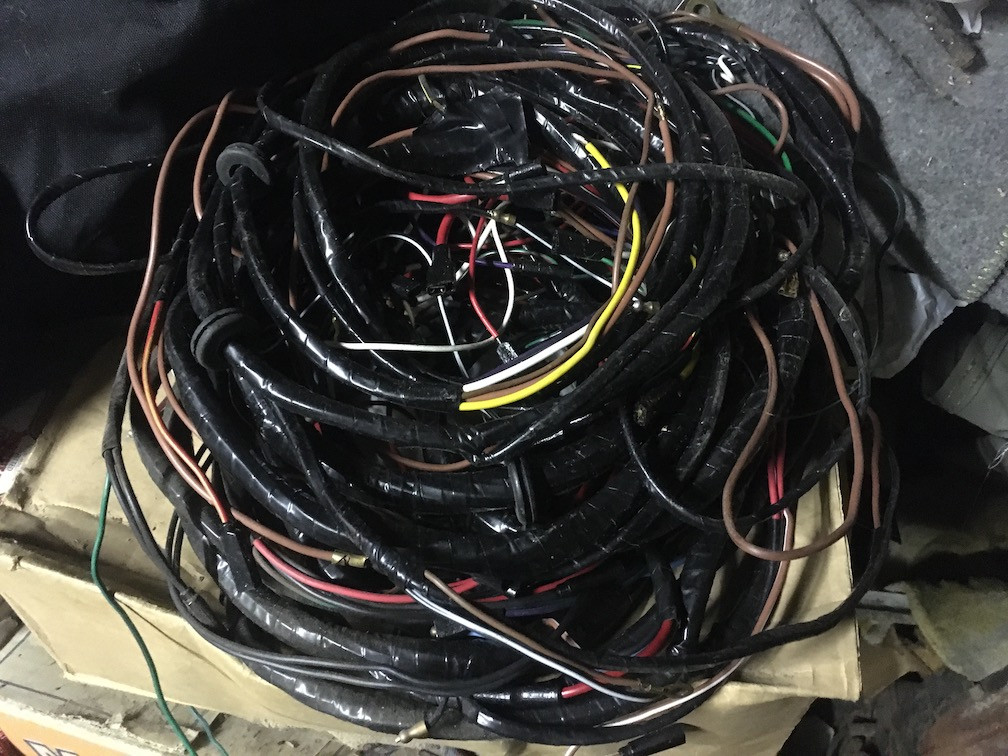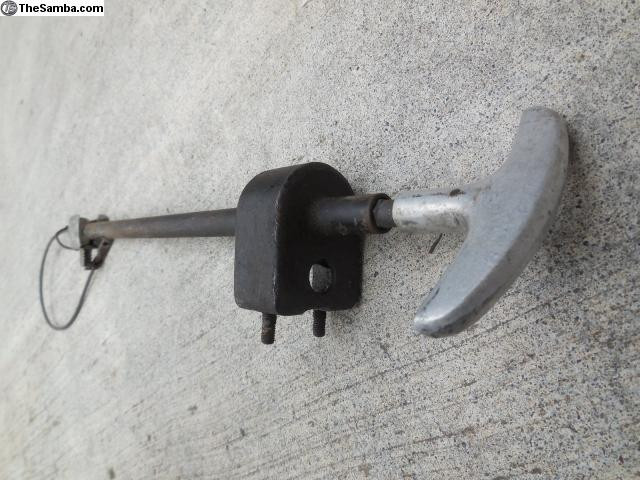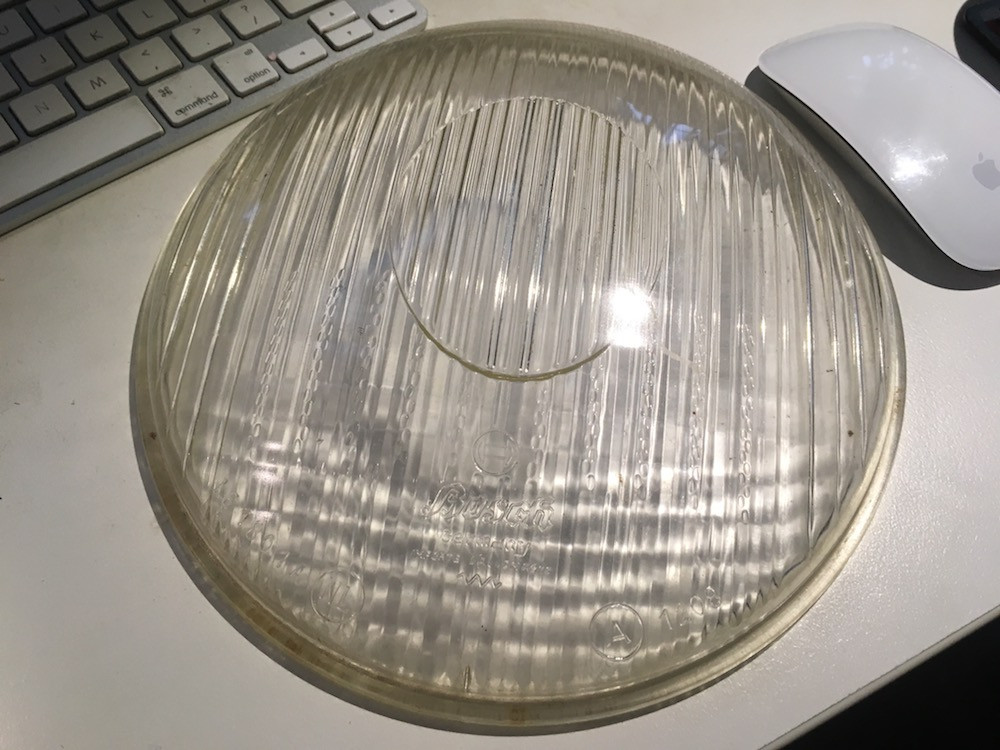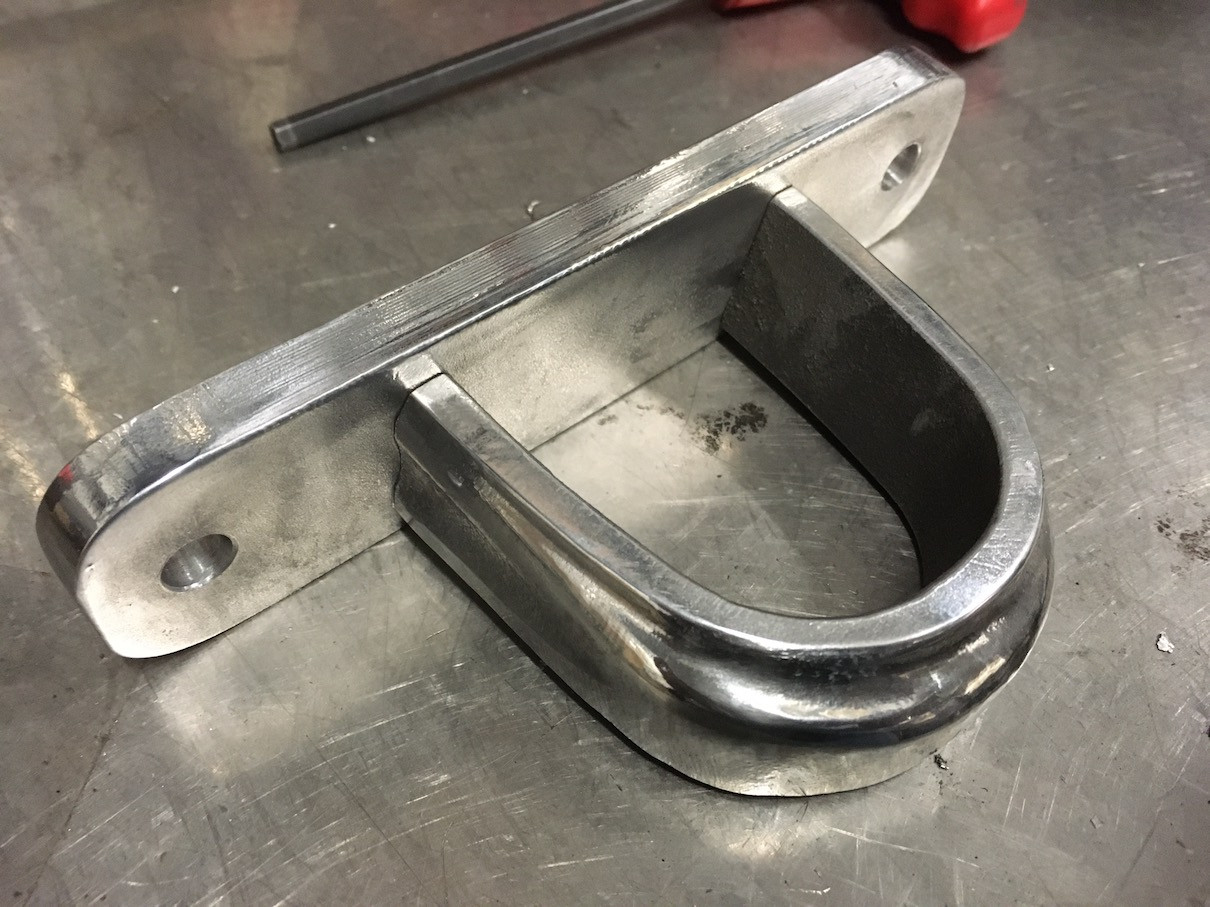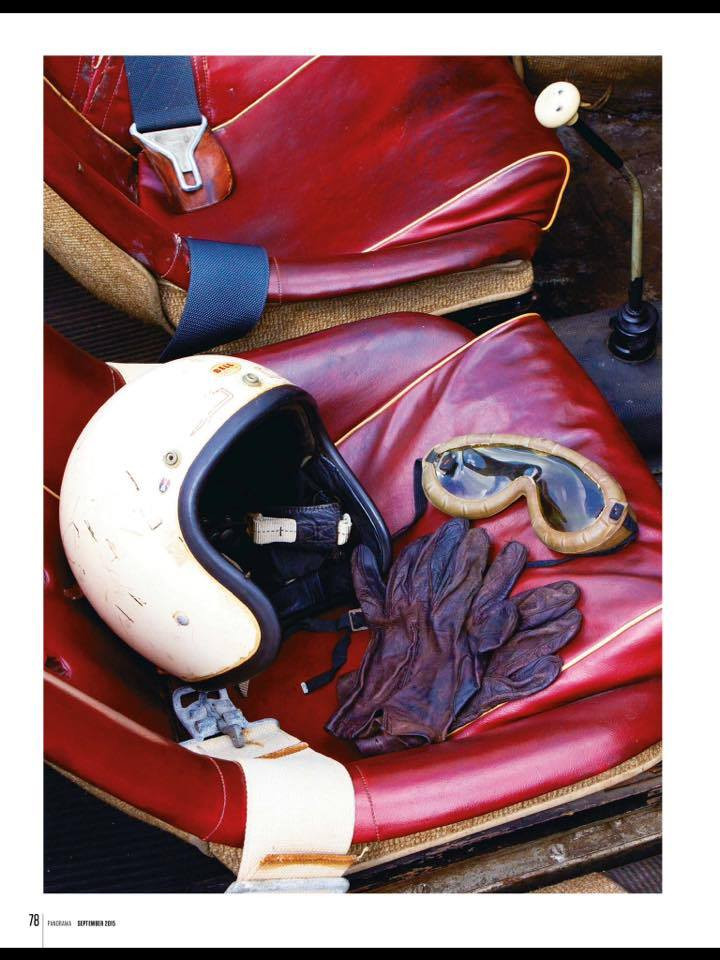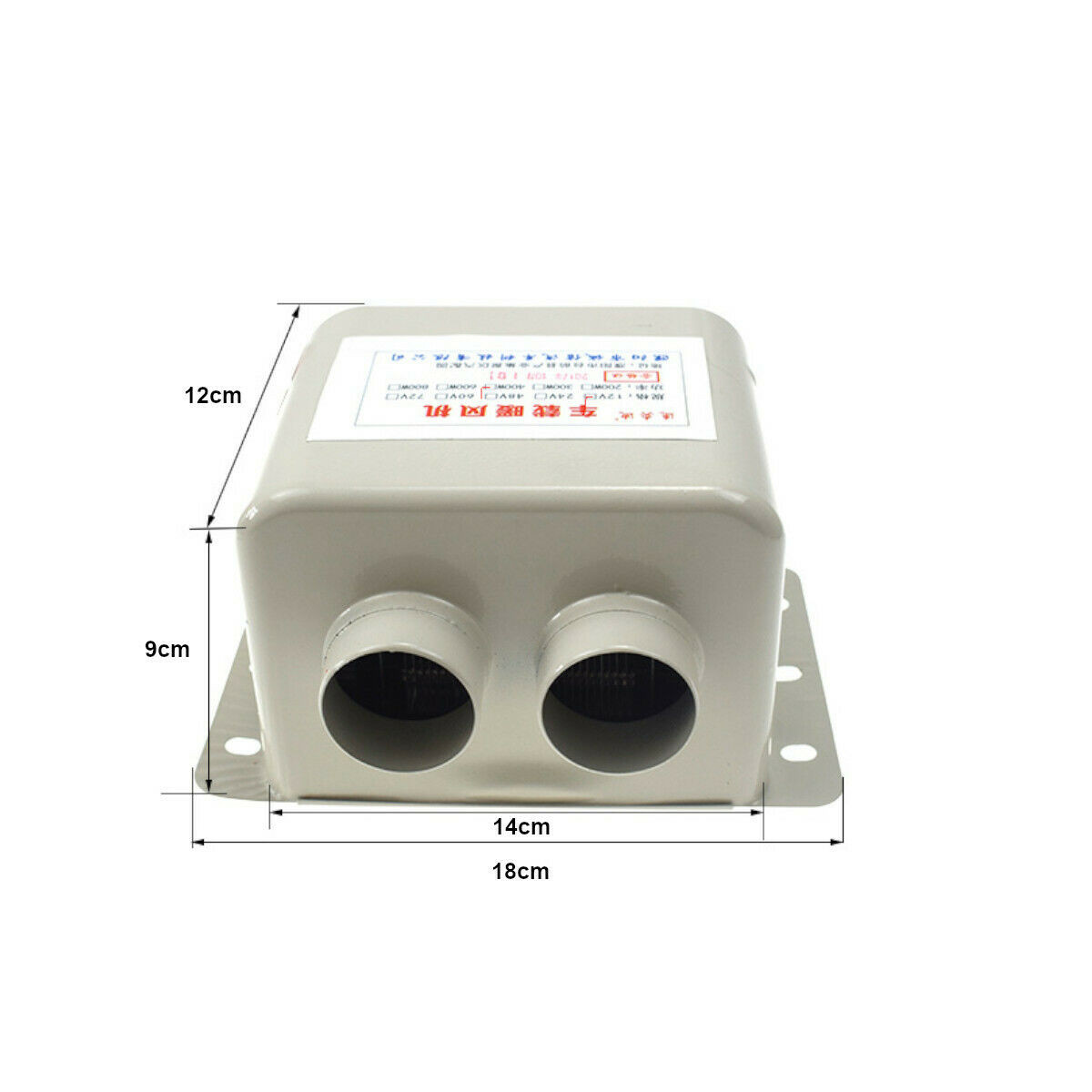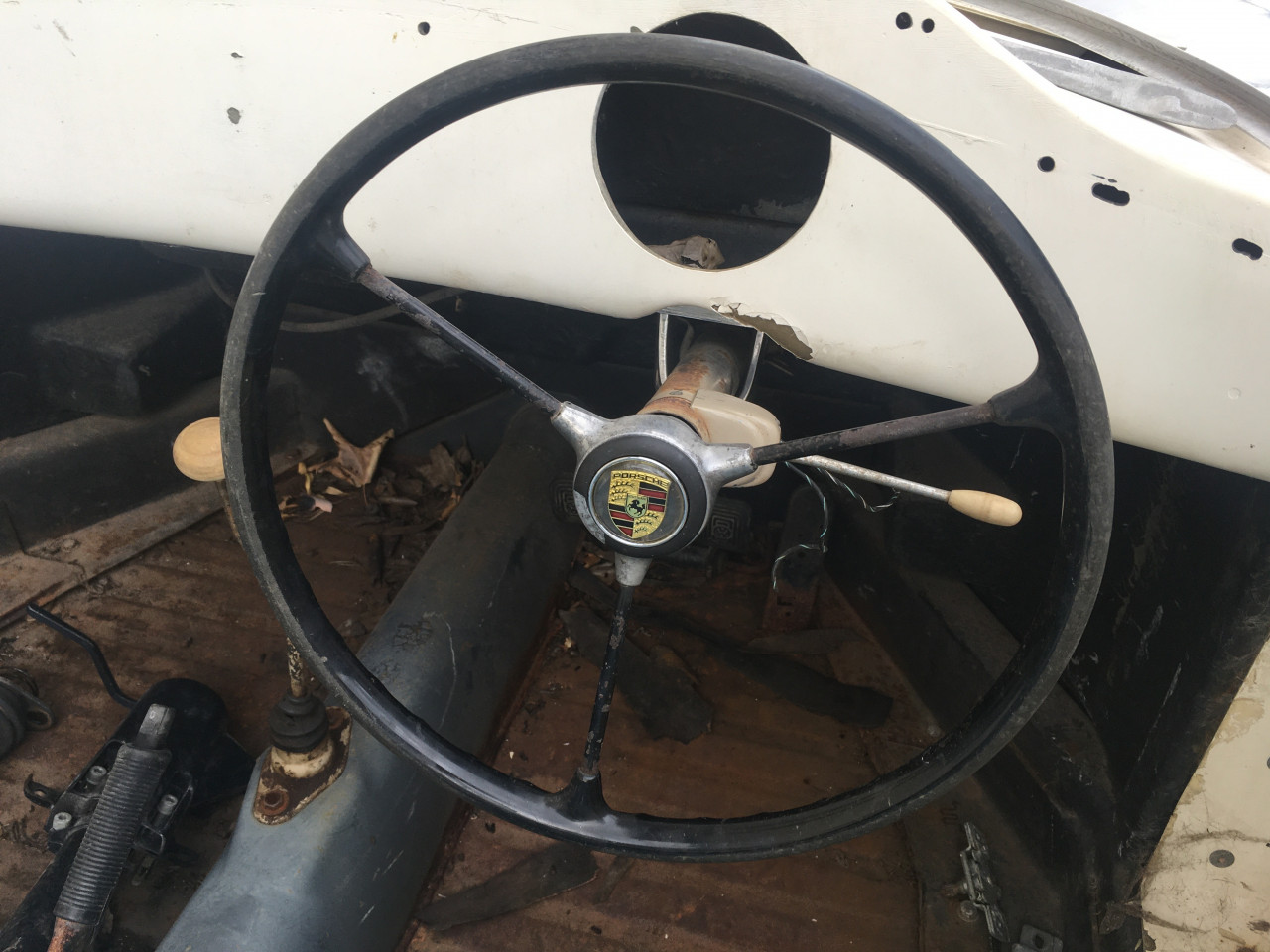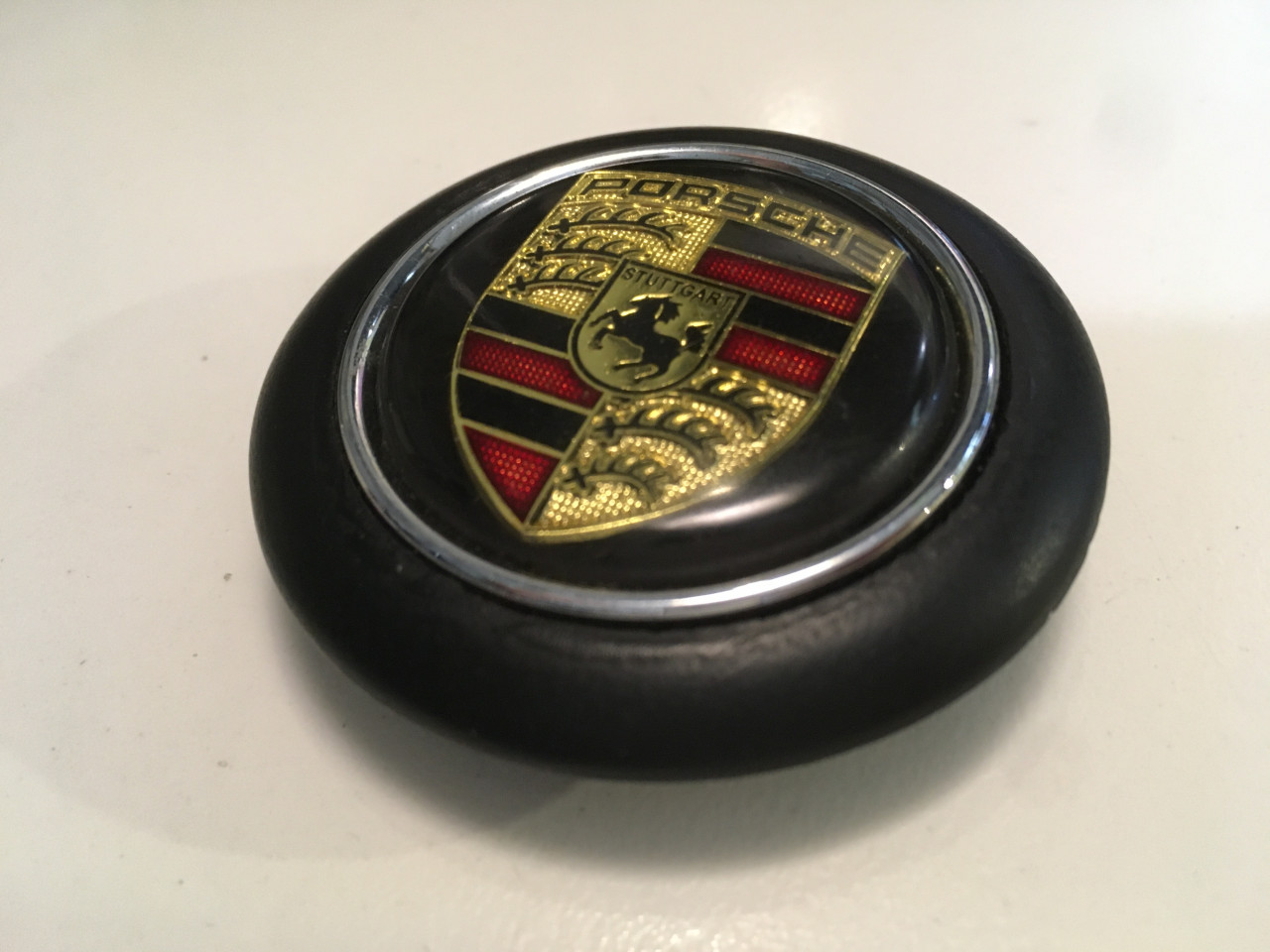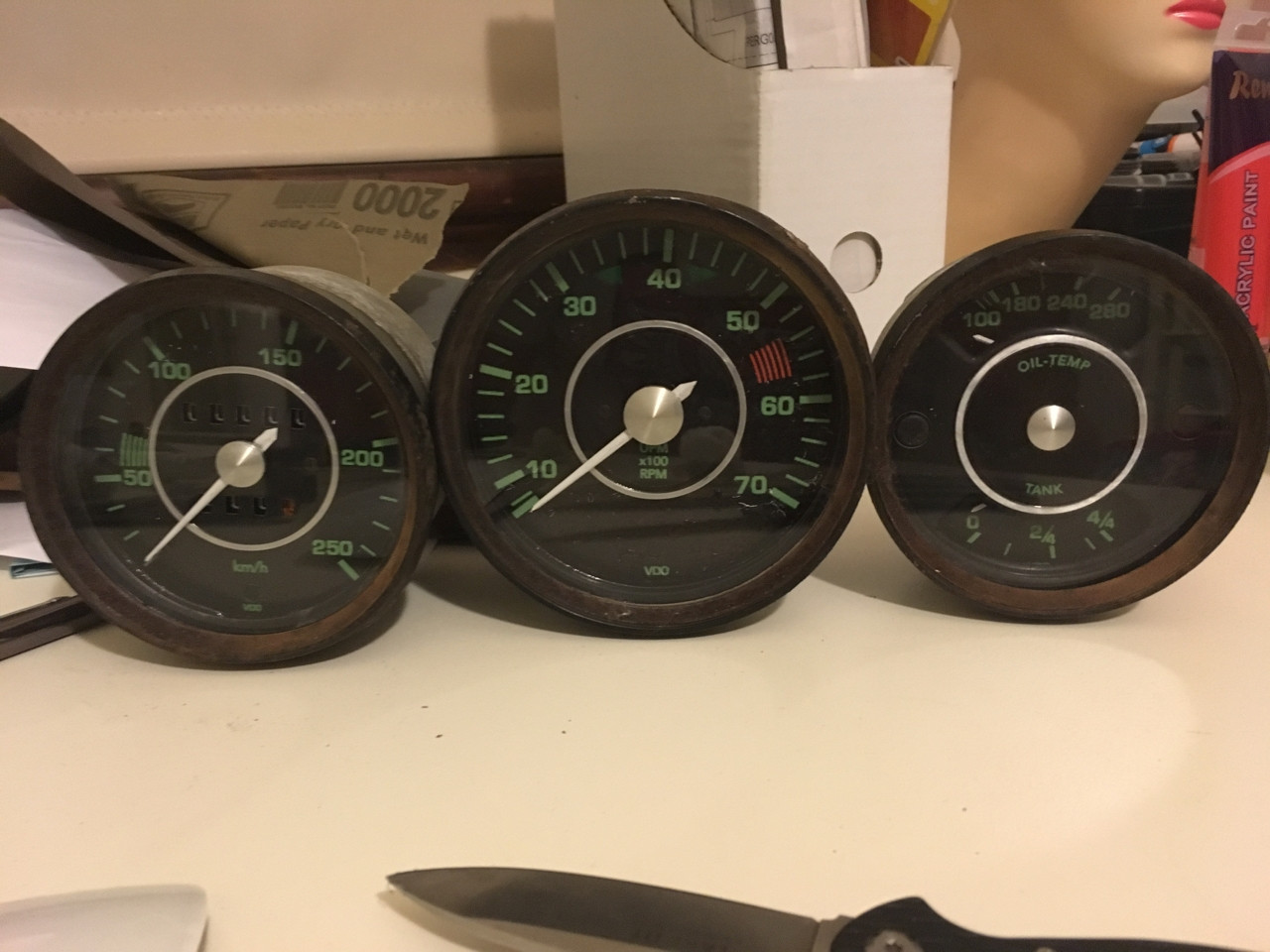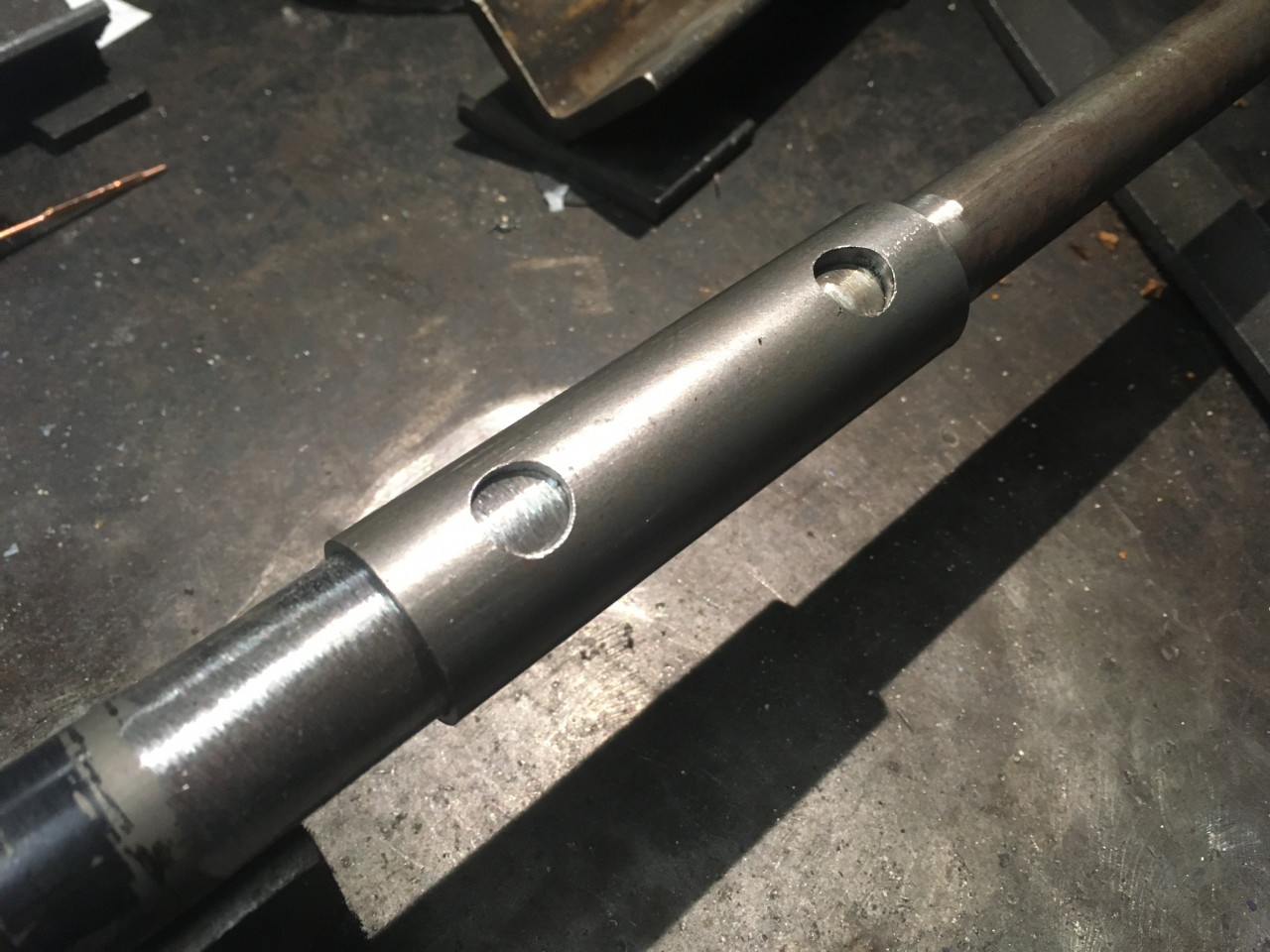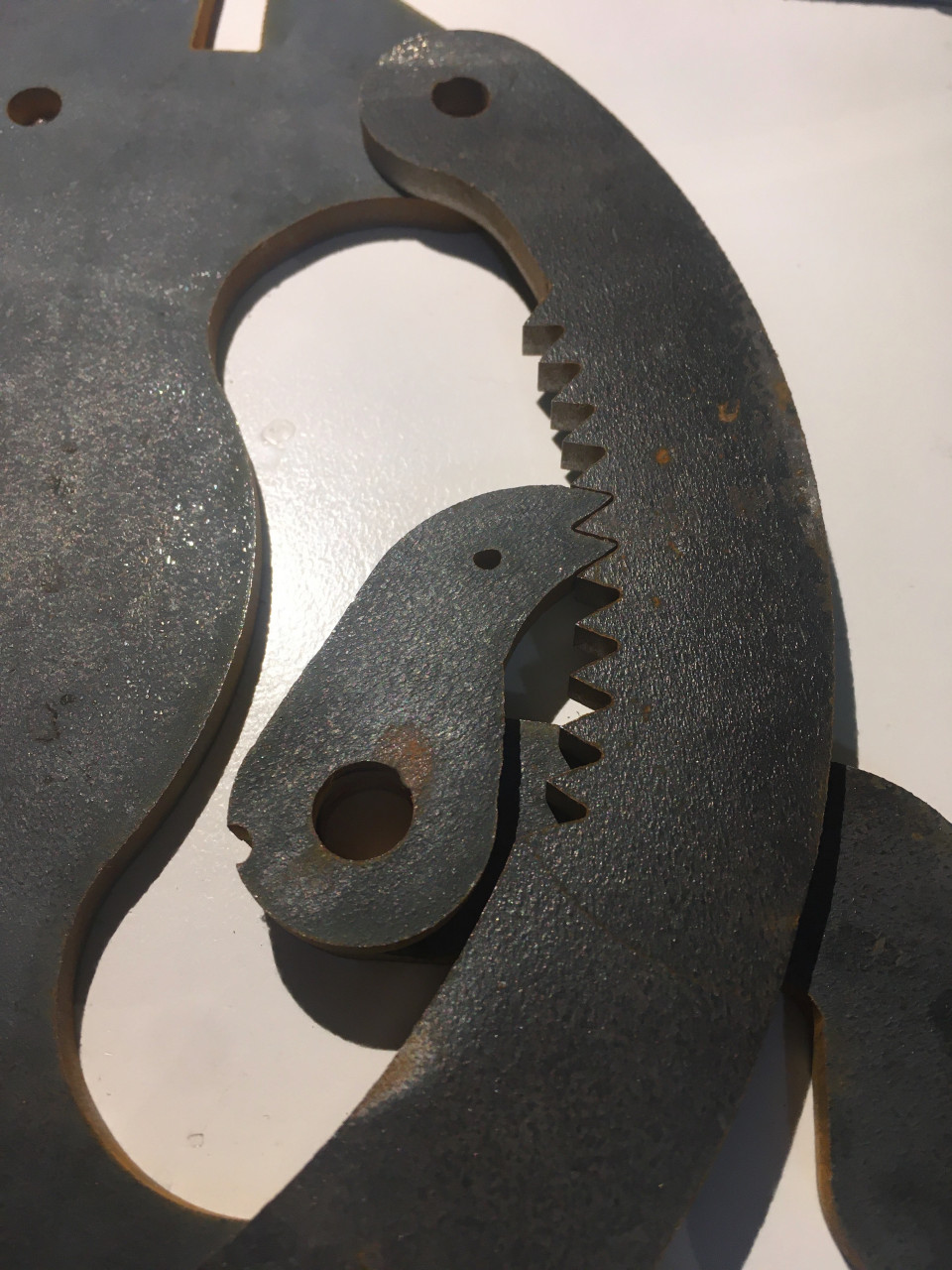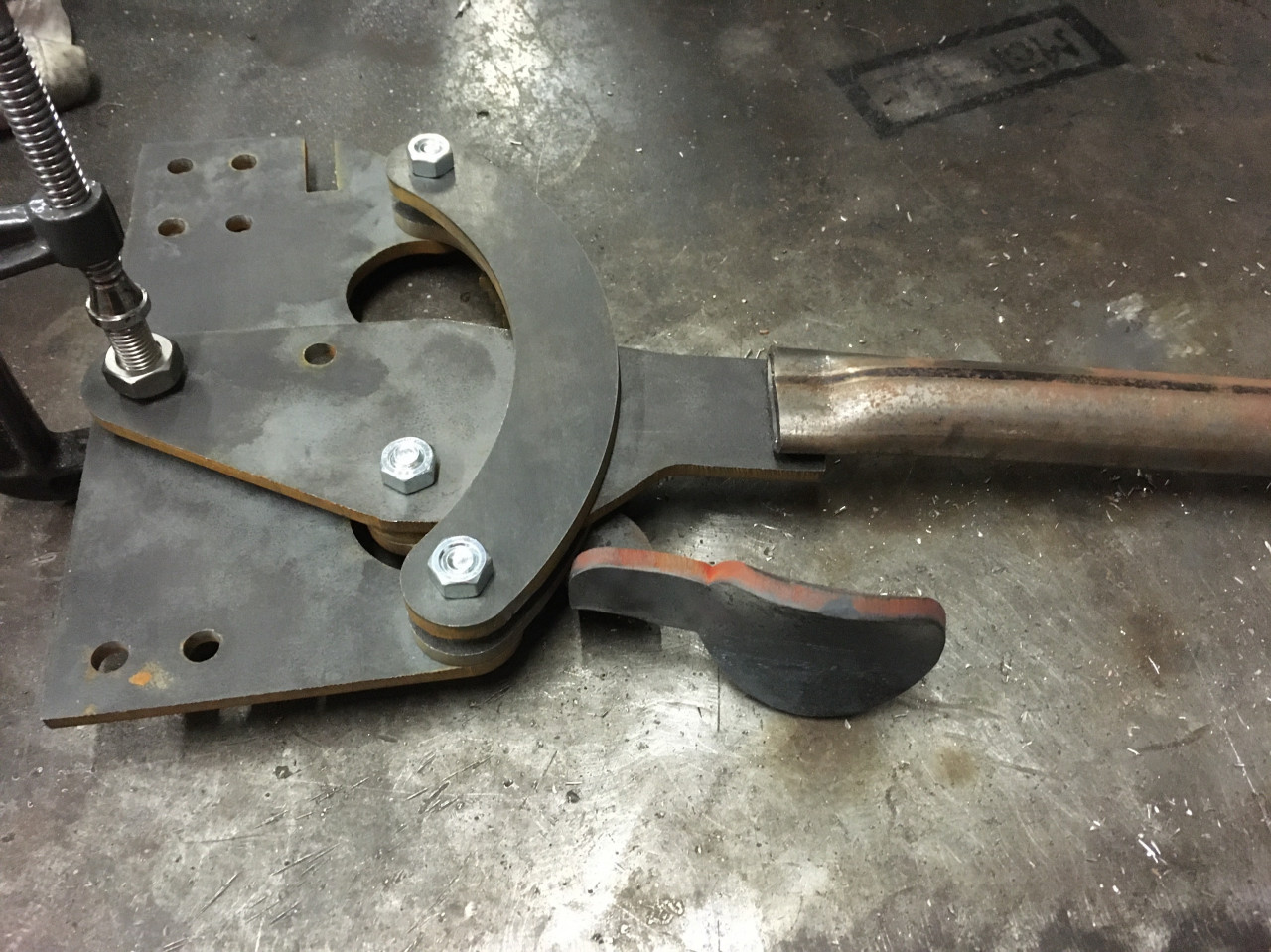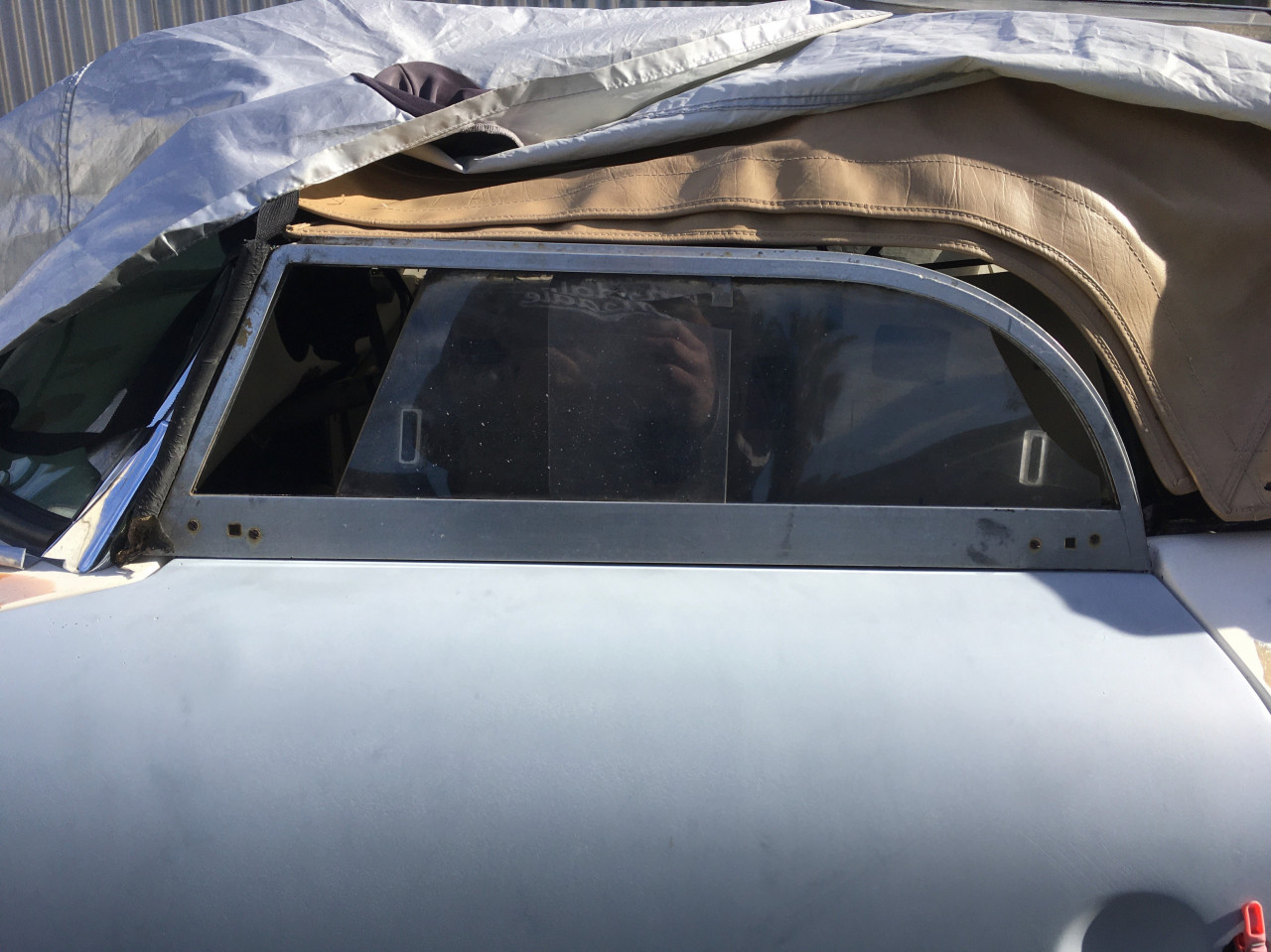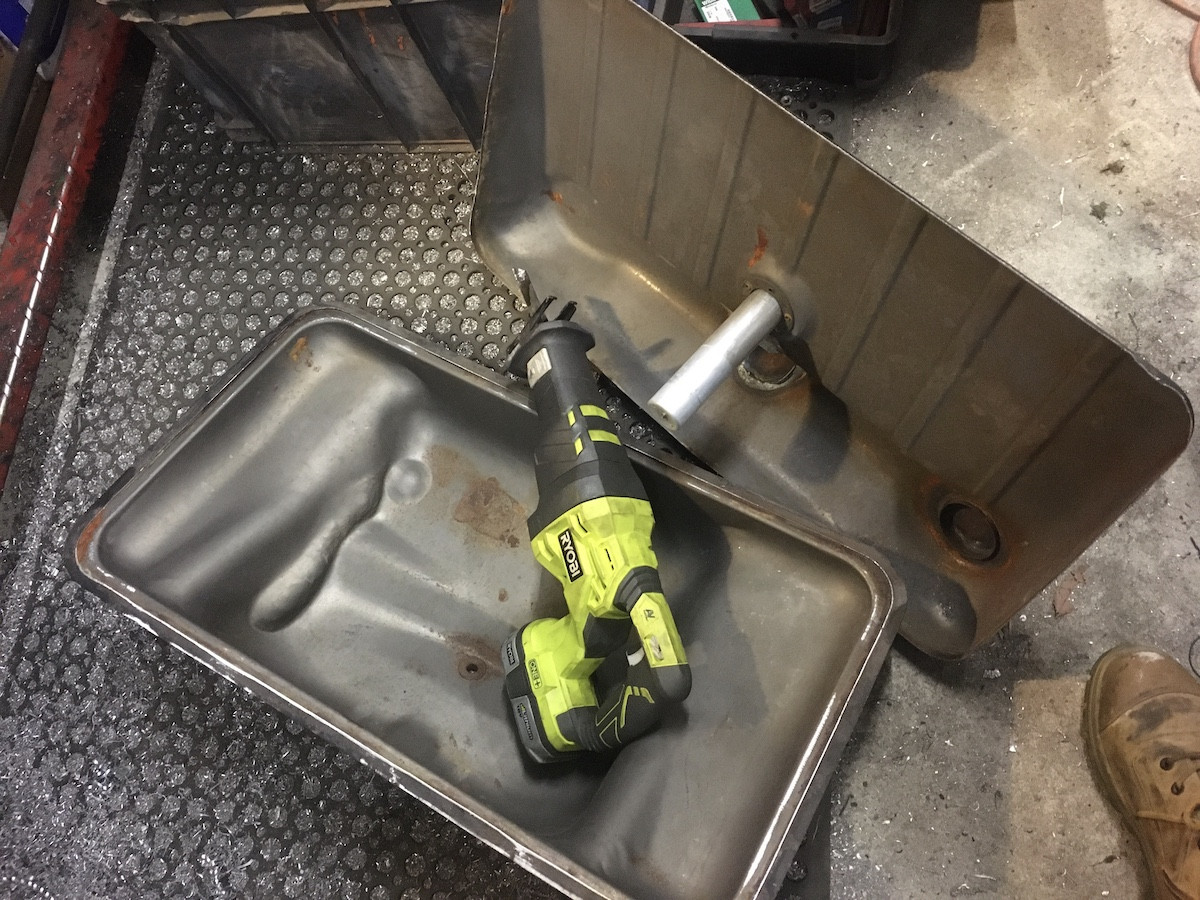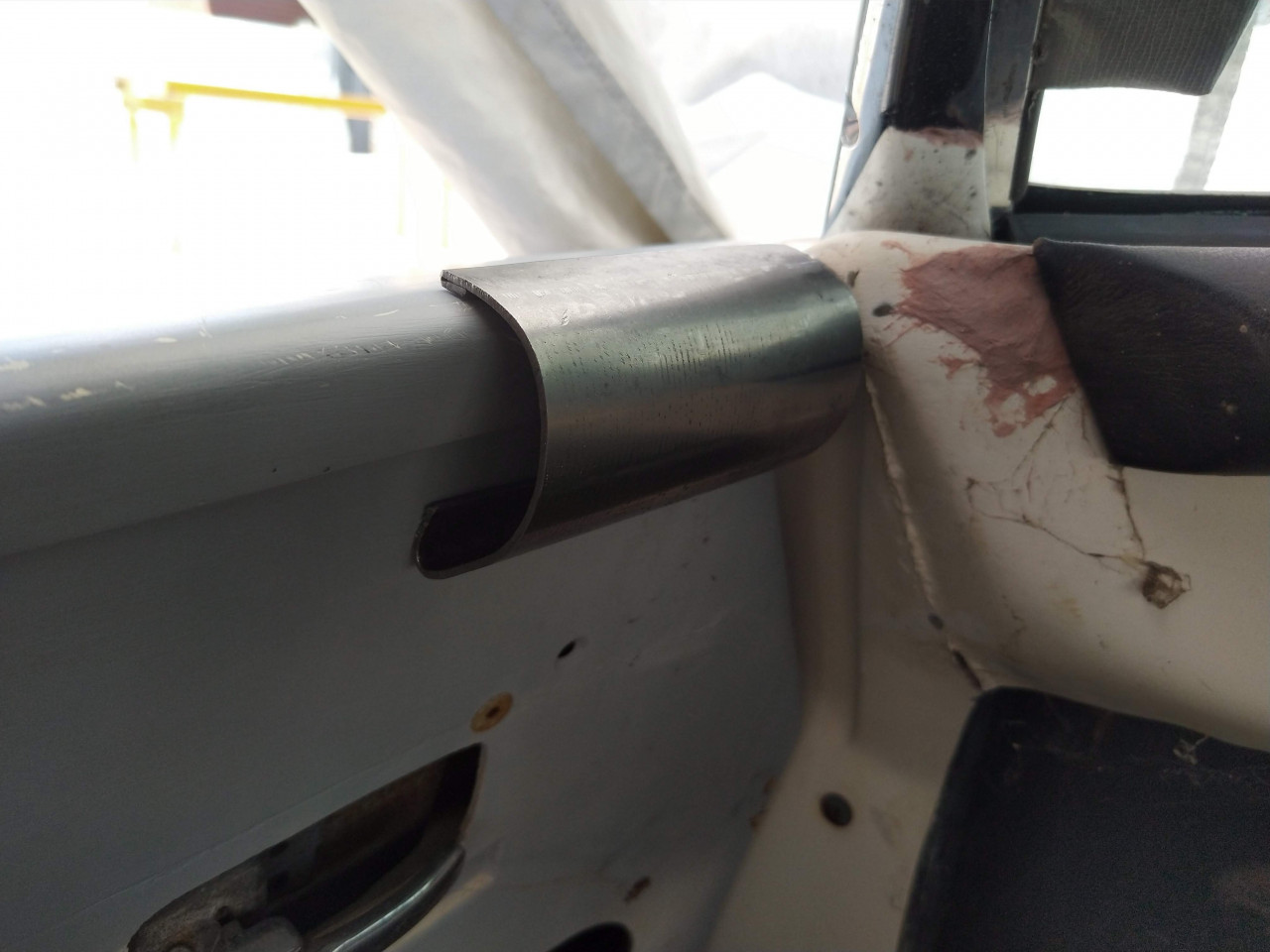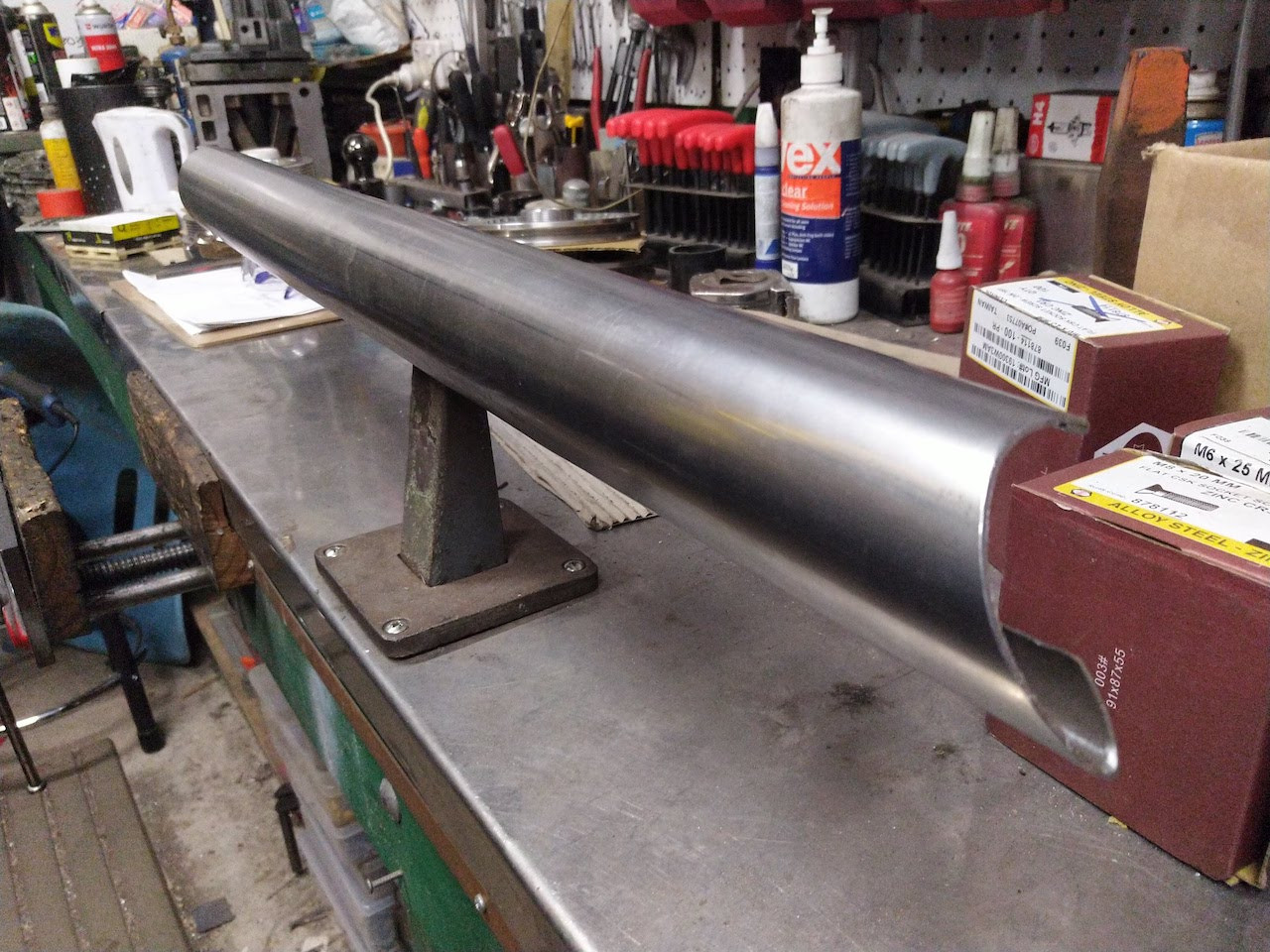Managed to scrounge a few minutes to finish off the collector for the Sebring exhaust tonight. I had ran out of gas when I was initially welding up the collector and so still had to join the two halves together. Today I managed to get a few minutes to finish them. I spent a little time tidying up the insides so that the two halves were symmetrical and then welded the two halves together to finish off the collector. I also trimmed down the uneven ends so that everything is ready for the next stage.
Received some more goodies in the post.
Early style rear lights and a red lense for my shine down light so that I can use it is a third brake light
It seems to be a tradition amongst replica 356 owners to have a period grille badge. Not being a fan of fake Outlaw 356 or Cliche'd Nurburgring badges I've been on the lookout for something more suitable.
Building an early replica has been a bit of a challenge in some areas. The Late 50's cars have a pretty good availability for trim and parts as most parts are now remanufactured. The early cars however have a number of differences from those late parts which means that in many cases, to be correct the late parts cannot be used. One such case is the Porsche scripts.
A Sebring style exhaust is something that I have been planning for a long while. Whilst it's not the best style of header to use from a performance perspective, it does have that iconic Porsche racing style to it and so is the perfect choice for a period looking car.
Got some more goodies today, my new front brake discs. These took a while to source as everyone has been out of stock since before Xmas.
If you read my previous post Sebring Exhaust Part 1 you would know that I have decided to build my own Sebring style exhaust.
This evening I managed to get a little time to make a start on it.
Many 356 fans will know of the name Reuter, the coach builder responsible for the manufacture of the Porsche 356 from 1950 onwards, but many do not realise that initially Reuter did not have the capacity to build the convertible models so this task was awarded to Glaser, the renowned East German coach builder.
Some of you may know that I'm trying to make my car look like a 'missing-link' car, something that might have come between the Pre-A cabs and the Speedster. Whilst the Max Hoffman commissioned America Roadster (shown below) is the actual link between these cars, it has very different body lines to either the orignal convertibles or the Speedsters and to me seems very out of place in the family tree. There are actually a few cars out there that fit in with this genealogy much better than the America Roadster; Take a Pre-A cabriolet and fit a low style windscreen or aero shields instead of the original and you have a very convincing missing-link car, a car that fits in much better than the America Roadster.
After completing the collector for my DIY Sebring exhaust the next part that I need to tackle is making the silencers. I have already spent a bit of time doing some research to try and find some off-the-shelf items but due to the small size needed I could not find anything available that could be used without having to modify it. This means that the only option left is to make them myself.
Been a bit flat out with work so no real time to do anything on the build but have been doing a bit of daydreaming whilst standing at the lathe. I've somehow convinced myself that I should put together my Okrasa engine for the Speedster.
For an authentic looking engine bay a Fram or Mann style bypass oil filter is a good nod to the original 356 engines and will definitely help give your engine bay that vintage Porsche look. Bypass filters are often dismissed as old hat and inferior to full flow style filters, but is that actually the case?
Keeping with my vintage speed 356 inspired Okrasa engine build I bought a nice O/T crank pulley. These four hole items are found on early 356's.
Been a while since anything has happened on the speedster. Not that there is anything to really report, but I did manage to tick off a couple of small jobs recently
I finally pulled the trigger on a set of beehives. I've long wanted to replace the not-quite-correct Lucas style 'beehives' with the correct style units and could resist no more when I saw these for sale.
One of those things that immediately grabs your attention when you open the engine bay on a 356 are the air filters. The original Pre-A's used dual single Solex carburettors moving on to the two barrel P40 Solex carburettors for the later 1600's and both setups used Knecht air filters which are visually distinctive in both cases both having the raised pressed Knecht logo on the top of the filters.
After a four month wait my hood frame, windscreen frame, side screens and hood cover has finally arrived. Happy days. Now I just need to figure out how it mounts in the car. Looking forwards to getting the hood frame installed so that I can make the car weatherproof.
One thing that I dislike about the VW based speedster kits is that they all have the handbrake in-between the seats, rather than under the dashboard like the originals, which is an obvious giveaway on its provenance. So this has always been on my list of things to change with my kit. Of course it will only fool the casual observer but it's these small details that set some projects aside from others.
Managed to trade for an second early style Bosch symmetrical headlight lense. I already had one of these but was missing it's partner.
Now I have two. :)
I'll swap the slightly later hella ones I have on there now out for these period correct ones.
Rollin, rollin, rollin...
I had a bit of a brainwave. I've pretty much decided that the car is going to be finished in a faux-patina and hopefully emulating an original survivor speedster / race car / outlaw. I may paint it properly later, but for the time being it's going to be the quickest way to get it presentable(ish) and on the road.
A while back I bought this awesome three spoked steering wheel from Ned Faux. It's much like a barndoor or early split bug wheel but not actually a VW item so unfortunately doesn't fit a VW steering column. But as I'd been looking for a barndoor or country buggy steering wheel for a while and figured that it was too good a price to turn down, so somehow I would make it fit. Plus it has an awesome patina to it, which will look just right in the speedster.
I finally got around to finishing off my horn push project.
Finished off the gauges this evening. Scaled the fascias down to fit and printed out a few test prints. I initially tried to print onto transparent water decal paper but found that the ink was not vibrant enough and did not show up that great on the black background. This was a shame as the transparent decal paper works a lot better then the white.
So unfortunately I was forced to use the white paper so that the green numerals were visible. This had one unfortunate side effect - that the white edge of the paper was clearly visible in a few areas against the black background.
Not too much progress to report. Although I did make a steering column bush for the hybrid steering column setup I'm building.
I'm not 100% sold on the black nylon, however the white was simply too white and new looking. I figured black would look a little more like bakelite.
Now all I need to do is cut and shut the crash can and hook the column up
The great thing about non-standard parts is that somehow you need to make them fit.
You will recall in previous posts that I've been chipping away at making the steering wheel fit. First making it fit the column, then making the column support, then making a nice fancy horn push and now the ultimate culmination of the steering wheel saga making the steering column fit the car.
In this episode I assemble the parts and drink some coffee.
Well, that's more-or-less what happened...
Just a quick update. Not much has been happening on the project as I've been tied up with work. But I did manage to grab a quick 5 minutes today to make a start on the fuel tank...
I've long wanted to make some original style steel door cappings for my speedster. Whilst repros can be purchased they seem to be almost as expensive as my car. Karmann Konnection in the UK have some listed at AU$1k for the pair. Far too rich for my taste.
So I decided to make a small test and build a prototype to see if I could figure out the best techniques for making them.
After a successful trial making a steel door garnish, I decided to have a go at making the complete thing.

